- THE PRINCESS PASSPORT
- Email Newsletter
- Yacht Walkthroughs
- Destinations
- Electronics
- Best Marine Electronics & Technology
- Boating Safety

- Uncategorized

Towing Fundamentals
- By Dudley Dawson
- Updated: February 25, 2011
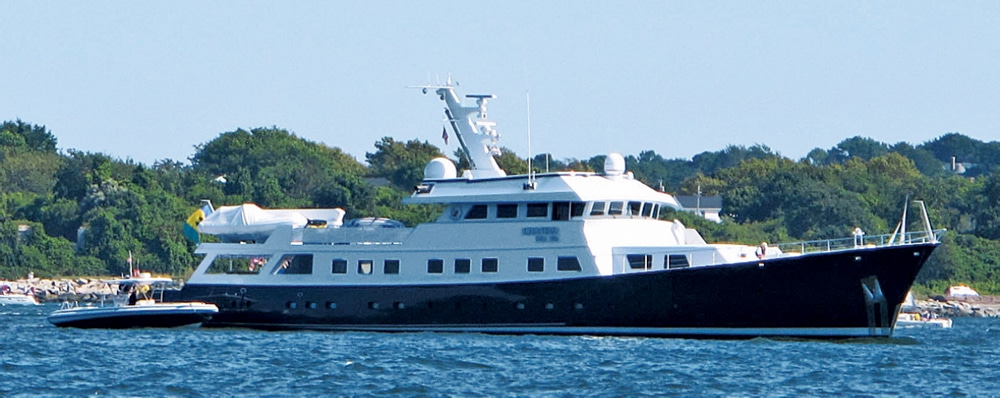
Though most yachts carry their tenders aboard, an increasing number are turning to towing as a viable solution. Not only does towing avoid the complexities of launching and retrieving the tender, but it also enables owners to take along a boat that might be too big to hoist aboard.
My colleague Jay Coyle regularly tows his Boston Whaler or his wife’s Hewes skiff astern of his Bertram 37. While he recommends not towing a tender that’s longer than the beam of the yacht, many others go well beyond that rule of thumb. Jack Hutchinson of Rope Inc. ( www.ropeinc.com ), a major supplier of tow bridles, says that many of his customers are towing center-console boats in the 40-foot range.
What Coyle and Hutchinson agree on, however, is the general configuration of the towing setup. Essential are sturdy cleats or bitts at the stern corners of the yacht, through-bolted with backing plates to handle the substantial loads from the tow. At the other end — the bow of the tender — the hardware is equally important. The small eye commonly installed at the stem for trailering or anchoring the tender is inadequate for the purpose of towing. Instead, a dedicated tow-eye should be installed. Broward Machine, among others, manufactures custom tow-eyes as well as stock units in stainless steel for many popular tender models.
Between these two attachment points lies the critical part of the towing rig. At the yacht end is a V-shaped bridle, attached at the yacht’s stern bitts and fitted with a ring at the center. The bridle should be nylon — to absorb a bit of the shock load when the tender hits a wave — but not so long that its stretch becomes a hazard in itself. Generally recommended is a 150- to 200-foot length of line, which puts the ring 50 to 75 feet astern and allows enough extra length for attaching to the bitts.
Abaft the bridle ring is 100 to 200 feet of high-strength, low-stretch line such as Spectra, available through Puget Sound Rope ( www.psrope.com ) or Lugger Line, available through Yale Cordage ( www.yalecordage.com ). Such rope is light, so it will float, helping to keep it away from props and making it easy to handle and stow. Ideally, the total length will be just enough to put the tender on the back side of the third wave of the yacht’s wake. This part of the rig is divided into two sections. The longer length is forward, joined to a shorter tender pendant by a quick-release snap shackle — Wichard or Tylaska are popular brands.
Remember that once you get under way with this rig, the yacht becomes a tow boat under the Rules of the Road navregs and the tender a towed vessel, so each must display the proper markings and lights for such operation.
Coyle tows with the tender’s motor tilted down for drag, but I never found this necessary with the small boats I’ve towed. Hutchinson says his customers do both, as well as partially down. He and several professional captains also mentioned other options to keep the tender in line, including towing a short length of chain from the tender’s stern. It all depends on the characteristics of both the yacht and the tender, as well as the tow rig, so it becomes a matter of trial and error with each combination. It’s best to get it sorted out on several short trips in varying weather before undertaking that long dream cruise with your tender astern.
Like yachting itself, towing involves certain inherent risks. Paramount among them is the fact that it may become necessary to ditch the tender in an emergency to protect the yacht. Some rig a release line from the shackle back to the yacht, while others just keep a knife handy to cut the bridle, mindful of the fact that there’s a lot of energy stored in that nylon when it’s under load.
- More Uncategorized

BoatUS Launches Online Advocacy Tool

Dock Danger

A Dream Fulfilled

3 America’s Cup Hashtags to Follow
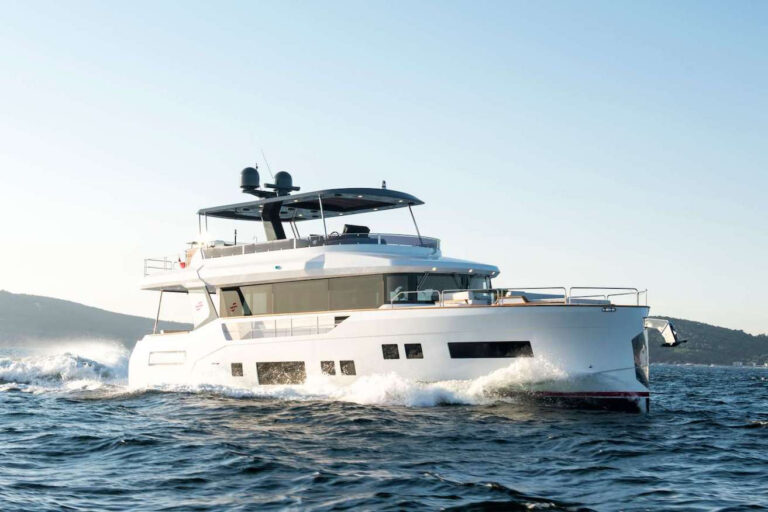
For Sale: 2023 Sirena 68
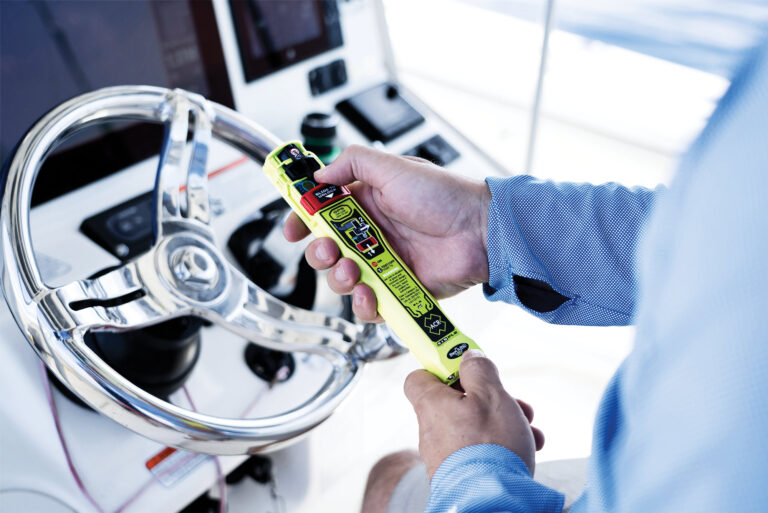
Saving Yourself With ACR’s PLB
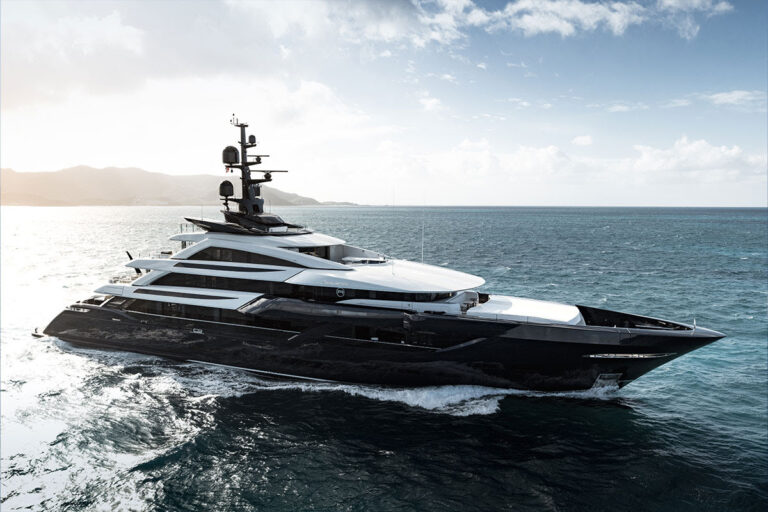
Charter Clients, Start Your Engines
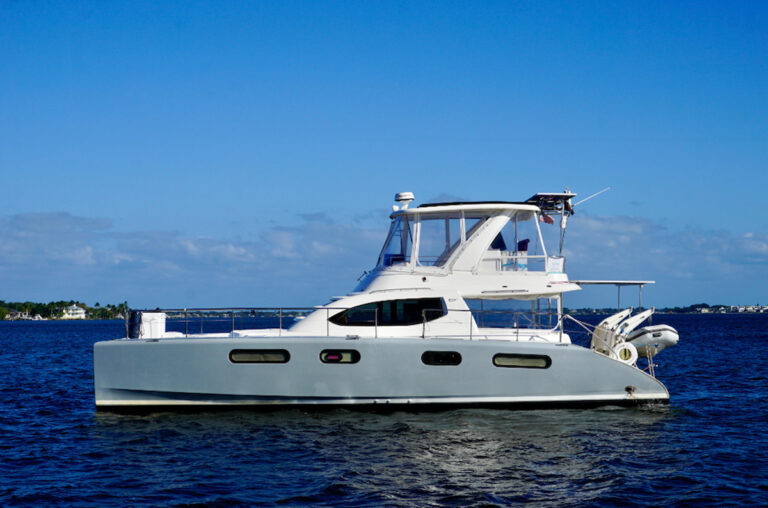
For Sale: 2008 Leopard 47 Powercat

- Digital Edition
- Customer Service
- Privacy Policy
- Terms of Use
- Email Newsletters
- Cruising World
- Florida Travel + Life
- Sailing World
- Salt Water Sportsman
- Sport Fishing
- Wakeboarding
Many products featured on this site were editorially chosen. Yachting may receive financial compensation for products purchased through this site.
Copyright © 2024 Yachting. A Bonnier LLC Company . All rights reserved. Reproduction in whole or in part without permission is prohibited.
View Cart Checkout
- No products in the cart.
Subtotal: $ 0.00
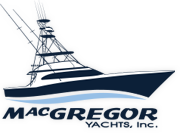
- All Current Listings
- Why Choose Macgregor
- Testimonials
- Leave a Review
- News & Events
- 10 Must-Haves for Tender Towing
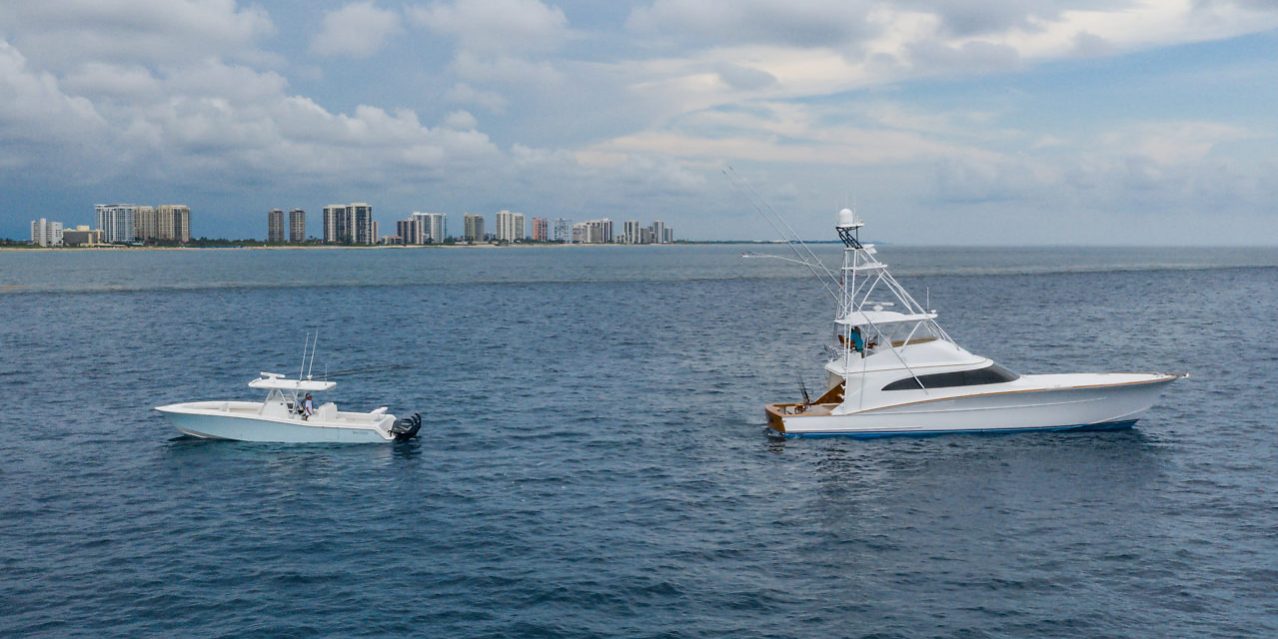
10 Must-Haves for Yacht Tender Towing
The MacGregor Yachts team has comprised the following suggestions for safe and efficient tender towing. Bringing along high-end outboard boats on excursions can be both economically sound and tremendously resourceful. Tenders will open up your activity options and bring you to areas where your mother ship cannot adventure. Here are 10 suggestions for proper and safe tender towing:
Install Multiple High Capacity Bilge Pumps with Ultra Pump Float Switches
Wire the spot light or visible forward spreader light to the ultra auto bilge pump switches (important to be daylight visible), install a solar charger for the house batteries/pump batteries, install additional deck drain/scuppers., install steering locking system or tie bar., install heavy duty (double point) towing bracket, use a spectra tow line with double braid bridle, equip the tender and mother ship with proper chafing gear for all necessary areas, install an ais system / gost tracking system, install a radar reflector and a solar white light.
Towing can be extremely challenging, especially in rough sea conditions. Always consider the sea conditions through the eyes of the tender, not the mother ship. Eight-foot seas may not be an issue for a 100’ vessel, but may be very challenging and dangerous for a 25’ tender. Always be educated on the current and future marine forecast during your voyage. Weather can be extremely unpredictable and can change in a matter of minutes or miles.
Always consider the manpower needed to handle both the mother ship and tender in the event of an emergency. NEVER put a crewmember at risk for the safety of a tender or piece of equipment.
Need a tender? Check out our center console inventory.
Happy Adventures and Safe Towing!
Author: MacGregor Yachts Team
Related posts.

- BOAT OF THE YEAR
- Newsletters
- Sailboat Reviews
- Boating Safety
- Sailing Totem
- Charter Resources
- Destinations
- Galley Recipes
- Living Aboard
- Sails and Rigging
- Maintenance
- Best Marine Electronics & Technology

Towing with your Tender
- By Captain Earl MacKenzie
- Updated: May 17, 2011
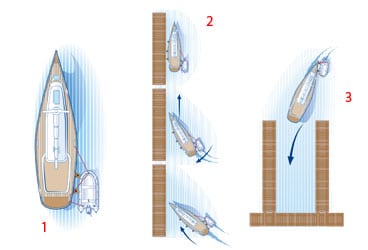
Towing with a tender
Although the modern marine engine has become very reliable, at some inopportune time, as with all mechanical devices, it may fail. Or you may find yourself in a position to help another sailor whose boat is disabled. Or you may find yourself becalmed in a less-than-ideal situation. Becoming proficient at the three primary towing configurations here will give you confidence that you can safely and efficiently handle these situations.
Much can be learned from professional seamen. Many of the finest boathandlers in the world are tugboat captains. The scale is different, but the techniques that they’ve developed for moving ships and barges are the same ones that cruising sailors use for towing and docking disabled boats.
Most sailboats today carry inflatable tenders with outboard motors of reasonable power to move the boat. A 10-foot inflatable tender with an 8-horsepower motor can easily maneuver a 50-foot boat in moderate conditions. In calm conditions, much less power will do the job. The first step is to have your tender, whether it’s a small inflatable or a hard dinghy, set up for the task. Inflatable tenders should be at their maximum recommended pressure. On our 11-foot inflatable RIB tender, we have 18 feet of 1/2-inch braided nylon for the bow line, several 12-foot lengths of 1/2-inch braided nylon that can be used as spring lines, a 5/8-inch braided nylon towing bridle with a stainless-steel snap on one end, and 100 feet of 5/8-inch braided nylon for the towline. The size and strength of the lines depend on the size and horsepower of the tender. Braided nylon makes a good choice because of its superior combination of strength, stretch, and chafe resistance. We also carry on board a sharp sheath knife should a line need to be cut in an emergency.
If the need arises (and it has), we can quickly hitch up and move a boat using any of these three configurations. When pushing or towing, always wear a life vest, preferably a work or sport style that’s comfortable and doesn’t inhibit movement.
The Side Tow, or On the Hip The best method for short tows in calm to moderate conditions where you’ll be docking the boat and are unlikely to encounter large wakes from passing vessels is the side tow, known in the commercial world as “on the hip.” First decide which side of the boat you’ll put next to the dock, then hitch up on the other side. Set up fenders for the tender; secure them alongside as shown in Diagram 1. The tender should be as far aft as the boat’s shape allows.
Sailboats with long stern overhangs won’t allow you to hitch up as far aft, but if the tender’s motor is aft of the boat’s rudder, maneuverability will be adequate. Double-enders tow well on the hip as the tender is able to push nearer to the boat’s centerline. On the hip doesn’t work well with catamarans.
Lines should be snug and secured properly to cleats in such a way that they won’t bind. It’s very important to be able to release lines in a hurry if a large wake should approach or you need to rapidly reconfigure. If towing in limited visibility or where other boats may be operating, give a sécurité call on VHF 16 with your description, location, and intended course. The last thing you want to encounter is a big sport-fishing boat roaring by unaware of your situation. As you begin towing, be aware that because you’re off center, extreme leeway will develop. The helmsman will need to crab the boat to make good on your desired course. As a reasonable speed is attained, the boat’s underbody will get a better “grip” on the water, and holding course will become less difficult. Until close-in maneuvering is required, steering should be done with the boat. Oversteering with the tender will make holding a course difficult. If the tow is configured as in Diagram 1, rapid turns can easily be made to port. Turning to starboard will be much slower and have a large turning radius. If a rapid turn to starboard is required, put the tender in neutral or even in reverse, allowing the boat’s momentum to carry it through the turn. This ability to crab the boat will greatly facilitate coming dockside. The key is to plan ahead and to get a feeling for the boat’s forward momentum and your ability to control and stop it. Always “test the brakes” prior to docking. Approach the dock (see Diagram 2) at an angle of between 30 and 45 degrees, keeping the bow pointed at the midpoint of the space on the dock where you want to end up. You should maintain only enough speed for steerage. Just before the bow of the boat reaches the dock, put the tender in reverse. As the boat continues to slow and stop, the bow moves out and the stern pivots in. This is a very satisfying maneuver when done properly. If you have to back the boat into a slip, reconfigure as in Diagram 3. If docking in a strong current, always plan your approach and final maneuver so that you’re pushing into the current. It can be used to your advantage when crabbing into a tight spot.
Pushing from Astern Pushing from astern is my preferred method for covering longer distances in moderate conditions when good control is required, as in a waterway or a harbor’s entrance channel. In Maine’s Penobscot Bay, many of the passenger schooners have no engines. The crew rely on their tenders, or yawlboats, to push them in and out of the harbor in calm conditions. They have become very skilled at handling these large and beautiful vessels in this manner.
Pushing the boat from astern, as in Diagram 4, is efficient because you’re pushing from the boat’s centerline, eliminating the need to crab. Depending on what type of stern your boat has, this method can be used in rougher conditions than the side tow. Some sailboats have extreme reverse or scoop transoms that make pushing awkward. Self-steering gear, boarding ladders, and stern-hung rudders can also preclude this method. It does work well for most boats, however. As in all hitch-ups, ensure that lines are secured in a way that can easily and rapidly be unhitched or adjusted. The spring lines must be tight and well secured, as they carry a lot of strain when turning. The unexpected release of one of these lines when turning poses a danger to the tender operator, as the tender will quickly scoot to one side, possibly tripping and throwing the skipper overboard. Pushing should be steady, with the outboard centered. Most motors have steering dampers that can easily be adjusted. It’s worth setting it so that the motor doesn’t swing easily on its own.
As catamarans usually have twin engines, it’s less likely that you’ll ever need to tow a cat. But they can be pushed quite easily. (See Diagram 5.) It’s extremely important when pushing a cat to have the two bow push lines in good condition and well secured. The tender’s bow line acts as one of the lines. The other is attached to the same bow eye as the bow line. The lines should be attached as far aft as possible on the cat’s hulls. If one of these lines lets go when you’re pushing hard, the tender will scoot ahead under the stern deck, with a high likelihood of injury to the operator.
When pushing from astern or on the hip, if you have to stop the boat or maneuver quickly to avoid an obstacle faster than the boat’s forward momentum allows, use hard reverse and pivot the boat while the helmsman holds the rudder in opposition. The rapid turn will quickly slow and eventually stop the boat’s forward carry.
Towing Astern Towing astern is the preferred method for longer tows, rougher conditions, or times when occasional large wakes may be encountered. This method requires the highest degree of skill, and it’s also perhaps the most dangerous if done improperly.
Good planning ahead of time with your crew is imperative, as communications won’t be as easy as they are when using the other methods. When towing, you won’t have a good line of sight to the helmsman, and the sound of the motor makes hearing difficult. Arrange some easily understood hand signals for stopping, slowing down, speeding up, change of direction, and the like. A handheld radio is helpful. Have the helmsman steer for the stern of the tender.
If the towed boat steers erratically or turns off in a different direction, it’ll cause the tender to go off course. In extreme cases, it can cause the tender to be overrun by the boat’s momentum as the tender struggles to stay in front or is swept alongside and aft, then swung stern-to as the boat surges ahead and the towline takes up.
When preparing to take the boat in tow, first rig your towing bridle. (See Diagram 6.) I clip the bridle on one transom eye, then run the line aft of the motor, securely attach my towline, then tie the bridle to the other eye. The bridle should be short enough to keep clear of the tender’s propeller but long enough to keep it clear of the motor. When the towline is centered and under load, it should form close to a 90-degree angle. I make sure that my towline is in several smaller coils and able to run free. Usually it’s best to approach the boat’s bow from leeward, then pass or toss the towline to the crew. I usually keep the bulk of the coil with me to lessen the risk of a foredeck tangle. Once the line is secure, maneuver ahead slowly and toss the remaining line astern.
As long as you’re moving forward, the line will stay clear of the tender’s propeller. As the slack comes out, ease ahead until the line grows taut. Depending on the conditions, I’d deploy 50 to 75 feet of towline to start. Gradually increase speed, and have the person on the bow adjust the towline so that the boats are in step, that is, both in the trough of the seas at the same time.
Towing out of step puts intermittent strain on the towline, as one boat surges down a wave while the other boat slows down climbing one. Having the towline properly secured is very important. If it comes loose or breaks a cleat, the loose end will slingshot toward the tender. The crew on the boat needs to keep an eye on the towline for signs of chafe and to ensure that the line remains secure.
Tugboats and purpose-built towboats are set up with towing bitts located forward of their rudders. This allows them to turn “under the tow” and maneuver. This can’t be done in a small inflatable, as the outboard motor is in the way. Attempting to tow from forward of the motor risks that the towline will catch on the motor’s cables and controls.
A technique that I’ve used when towing with boats that lack towing bitts or have outboards in the way involves using a sliding bridle. (See Diagram 7.) Anyone who’s attempted to tow a boat from off center knows that the towboat will rapidly be pulled sideways, and any attempt to get out in front means slacking the towline, trying to avoid getting it caught in the propeller, and starting over. With the sliding-bridle method, you attach the towline to a smooth stainless-steel ring or a seized shackle that can freely slide from side to side on the bridle. If one isn’t available, simply tie a bowline onto the bridle. When you first take a strain, the towline will go to center. Let’s say that you want to turn to port. Ease off on the throttle, but not so much that the line goes completely slack. Turn hard to port. As the tender’s stern goes to starboard, the towline slides to port. Take up the strain; when the tender is in the desired position and the towed boat is on the desired course, ease off, turn slightly to starboard, and throttle up to center the towline. This method served me well for many years when towing boats and floats at my boatyard.
In conclusion, I want to emphasize the importance of preparing and planning ahead for any of these maneuvers. Know the capabilities of the crew and tender, and take the time to practice. Good boathandling is a sign of good seamanship. _ Captain Earl MacKenzie, who holds a 500-ton Ocean Master license for power and sail, and his wife, Bonnie, run and operate_ Bonnie Lynn_, a U.S. Coast Guard-inspected brigantine rated for ocean service. To learn more about the MacKenzies, see “ Bonnie Lynn : A Dream in Fast-Forward” (August 2000)._
- More: boat handling , How To , propulsion , seamanship
- More How To

3 Clutch Sails For Peak Performance

It’s Time to Rethink Your Ditch Kit

8 Ways to Prevent Seasickness

How To De-Winterize Your Diesel Engine

The Moorings Expands in Croatia
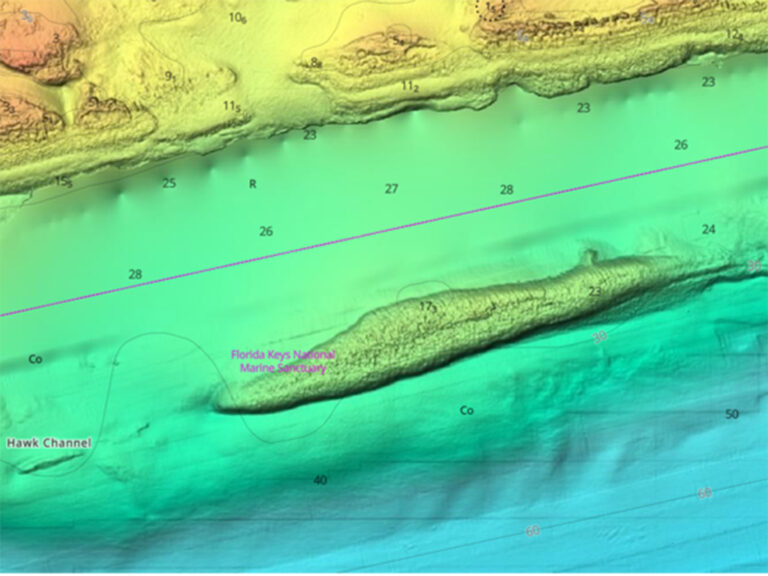
C-Map Updates North America Charts
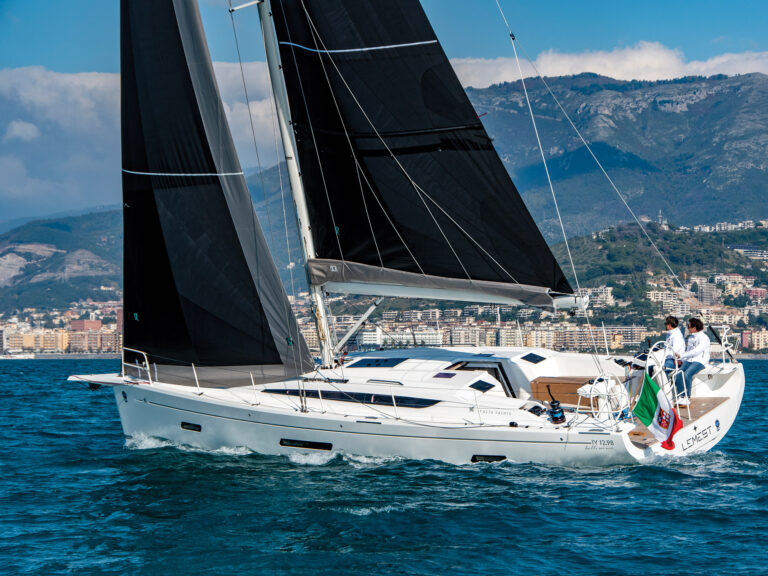
New to the Fleet: Italia Yachts 12.98

St. Vincent Court Orders Deportation For Hijacking Suspects
- Digital Edition
- Customer Service
- Privacy Policy
- Terms of Use
- Email Newsletters
- Cruising World
- Florida Travel + Life
- Sailing World
- Salt Water Sportsman
- Sport Fishing
- Wakeboarding
Many products featured on this site were editorially chosen. Cruising World may receive financial compensation for products purchased through this site.
Copyright © 2024 Cruising World. A Bonnier LLC Company . All rights reserved. Reproduction in whole or in part without permission is prohibited.
Yachting Monthly
- Digital edition

Towing a boat: how to tow and be towed
- James Stevens
- August 22, 2021
When a boat needs towing, cruising yachts are often among the first on the scene. James Stevens explains how best to go about towing a boat

Knowing how best to tow a boat on the water (as opposed to towing a boat on a trailer ) is not necessarily something that occurs to most yachtsmen. But knowing how to do it is still a key seamanship skill, and anyone listening to VHF Ch16 in the summer months will hear a good number of boats, of various descriptions, requesting assistance.
Whether it’s towing a dinghy, a small motor boat with engine problems, or another yacht in difficulty, cruising yachts can often be the first on the scene to lend a hand, at least until other help arrives.
Towing is incredibly simple in principle – just attach a line between two boats and off you go – but it is not always so straightforward, and mistakes can be costly. The weather and sea state make a huge difference, changing an easy process into one that can be difficult and possibly dangerous.
Helping a boat in distress
Some of the best boat handlers I have ever examined at yachtmaster and instructor levels are tug drivers. They have an ingrained ability to sense the effect the huge tension on the towline is having on the tug and the grave danger if the tug ends up beam-on to the line under tension. As a result their boat handling under power is first class.
For yacht skippers, apart from tenders, towing is a rare event and usually involves assisting a fellow yacht; not as hazardous as a tug towing a ship, of course, but it can still be difficult, especially in the open sea.
Towing a yacht is done to get them home following a problem caused by engine failure or some other non-urgent inconvenience.

If you come across a yacht in distress your primary obligation is to save the people on board rather than the yacht, although this might be achieved by towing the yacht away from danger. In a rough sea it’s probably going to be a difficult and possibly dangerous manoeuvre, so standing by until the rescue services arrive might be more appropriate.
In less urgent situations you have to weigh up whether your yacht is capable of taking on a tow. Towing a larger yacht in calm water for a short distance is relatively easy. If there is no wind or tidal stream and the sea is flat you can safely tow a yacht twice your size.
In the open sea with a swell and wind it is best not to attempt towing vessels larger than your own. Again you might have to stand by until help arrives.
What’s the difference between Salvage and Towage
Legally a towing vessel can claim salvage if the tow has been rescued from danger with no pre-agreed terms. Alternatively towage is where there is a prior agreement between tug and tow.
Legally it does not matter who passes the towline. Insurance policies vary on whether they cover salvage and towage.
By accepting a tow on any vessel I think a skipper is not in a position to start telling the tow where they are going to end up; that is a decision for the towing vessel to make. Also by accepting a tow a skipper should realise it is a considerable favour for any towing vessel to make and be gracious and generous afterwards.
If a tow is in response to a Coastguard request, the Coastguard will need to be kept informed. They will ask you to provide details for their records, but don’t let yourself become distracted from the task at hand. Tell them you will call them back if you are busy and focus on the situation in front of you first!

Throwing a heaving line
Setting up for towing a boat
Throwing a heaving line is the safest way of making contact.
It has to be very calm to come alongside in order to pass the towline by hand. In any kind of sea the rigging is going to get tangled if you get too close. Remember heaving lines only go downwind.
Hopefully the crew of the towed vessel will understand that the actual towline will be on the end of the heaving line when they have pulled it in, although it’s surprising how many crew cleat the heaving line and signal they’re ready to go.
A heaving line is a light line with a soft weight on the end; traditionally a monkey’s fist knot. The length is usually a total of about 10m.
Many yachts have a heaving line with a quoit or weighted bag attached for man overboard emergencies. It will go further if you throw overarm but it takes a little practice to master the technique.
To attach the heaving line to the thicker towline you should use a double sheet bend. Both working ends should emerge from the same side to make the bend more stable.
How to set up a tow for a boat
The traditional way of attaching the tow is with a bridle. This is a line led from one quarter to the other to which the towline is attached via a bowline around the bridle line.

Use a bridle to allow the tow rope to move
The reason for this is first to allow a quick release by dropping one side of the bridle, and secondly the bowline will slip to one side as the towing boat turns, assisting the turn.
Commercial tugs attach the towline forward of the pivot point making manoeuvring much easier. On a yacht the pivot point going ahead is usually near the leading edge of the keel, so attaching the tow forward is normally impossible.
For tows of short duration the towline can be attached to the bridle with a bowline, but if the yachts are in for the long haul, chafe is a problem and a double sheet bend is the best connection.
On the towing yacht, it is worth spreading the load of the bridle via the stern cleats to the primary winches and other strong points on the boat.
Most of a sea tow will be in a straight line but the length of one side of the bridle can be adjusted to assist steering if necessary – adding more weight to the side you want to turn towards is much the same as one of the methods for steering after rudder failure, so works well, and might help stop the bows being blown off course.
How to prepare to be towed on your boat
The towed crew need to organise themselves to attach the towline securely especially if there is a protracted tow ahead.
Sharing the load between strong points, minimising chafe and avoiding weaker fittings, is key. Use the winches if possible by leading a bridle aft from the bow, via the midships cleats and to the cockpit winches.

The foredeck anchor windlass ought to be a strong point but on some modern yachts it will not be tough enough for the job on its own, as the deck below may have insufficient strengthening for the potential shock loads of a tow at sea.
The towline should be attached to the bridle in such a way that it can be easily released. A bridle that passes from the cockpit winches, all the way to the bow cleats and back to the cockpit can be released from the cockpit, providing the towline was tied in a bowline around the bridle.
If you have used two lines from the cockpit as we did, we found that using a round turn and two half hitches meant we could release the tow line when it was under load.
The rougher the sea the longer the towline should be. A towline which continually snatches puts huge stresses on both yachts.
Snubbing can be reduced by using chain for at least part of the towline, even attaching the towline to the anchor and paying out anchor chain is possible – only in deep water of course.
Other items such a jerry can of water, placed part way along the tow line, could be used to induce catenary in the tow line and reduce snatching.
Towing a boat u nderway
It’s crucial the towed vessel steers to follow to avoid sheering and adding significant strain to the tow. Towing is most difficult downwind in rough conditions.

Towing is much more difficult in rough conditions
Once both yachts are accelerating and decelerating on waves this is challenging to say the least. The towing yacht has to maintain enough speed to avoid being overtaken.
The best prevention in this situation is to have a tow line long enough to keep the boats more than one wavelength apart. That way, if the towed boat does accelerate, it still has another wave ahead of it before hitting the towing vessel.
In this situation it is essential to have a radio or phone connection. The towed yacht can stream a drogue or a long bight of rope to help slow it down. A bucket can be used providing it is not the usual sort with a handle which falls off in a few seconds.
If it is all proving too difficult it may be worth rethinking the destination or tacking downwind, steering a more oblique angle to the waves, and thereby reducing acceleration of the towed vessel down the faces of the waves.
Towing upwind puts more strain on the towline, deck fittings and the towing yacht’s engine but the tow is generally more stable. You will need to reduce speed to a point where both vessels feel comfortable, while still making progress to windward.
As usual it is essential to keep a good watch both ahead, on the towline and on the course. Towing is not a good time to make a navigational error or wrap a lobster pot line round the prop.

Make sure you have enough line out to avoid collisions
Avoiding collisions when towing a boat
No day shapes are required for tows under 200m. Over 200m both the towing vessel and the towed vessel should display a diamond shape. Avoid towing a boat at night. Showing the lights of a tug might prove difficult, but have a torch ready to scare off vessels.
At night tugs have distinctive lights to minimise the danger of vessels crossing the towline. If the tow is under 200m the towing vessel should show two masthead lights in a vertical line. There should therefore be an extra light with the same arc of visibility as the usual one used for night motoring.
A tow of over 200m requires three white lights on the mast. There should also be a yellow towing light above the sternlight. Turning on the normal steaming lights and the anchor light at the masthead is fine from the bow but puts a white light above the sternlight.
Reaching port
Once you have reached sheltered water, slow down and shorten the tow. At this stage you may want to ask the marina launch or harbour master to take over as their boat may be better suited to the task.
Whether that is not possible or not, the best plan is to opt for an alongside tow. Setting it up correctly is crucial to manoeuvrability.

It might be best to tow alongside in busy ports
Opt for an alongside tow in busy waters
Once you arrive in the congested waters of a harbour you need greater control of the tow – and importantly the ability to slow down easily.
The alongside tow allows you to position the disabled boat on a pontoon which is probably best for any repairs.
Think carefully about which side is best for the tow, bearing in mind what the wind and tide are doing on the mooring or pontoon at the final destination. The tug will need to be on the outside when you come alongside.
Utilise bow and stern lines
Use plenty of fenders and position the tug so the pivot point of the combined vessels is well forward of the propeller and rudder of the tug.
This usually means the tug is positioned on the towed vessel’s quarter with the prop and rudder of the tug behind the transom of the tow. Use bow and stern lines to keep them parallel, or slightly bows in.
The spring from the towed vessel’s stern to the tug’s bow will take the weight of the tow, and the spring from the towed vessel’s bow to the tug’s stern will stop the towed vessel surging ahead when slowing down.
Steering the alongside tow
The tug must steer, but the towed vessel can assist. With the tug’s rudder far enough aft and plenty of throttle, turning either way is possible, but it is much easier to turn towards the towed vessel.
Conversely when the tug goes astern to slow down at the destination, the tow will rotate towards the tug’s side. Unsurprisingly the stopping distance is much longer so take it slowly. The helm of the tug may not be able to see clearly all round so keep communicating between tug and tow.
Problems with towing a boat
So far we have only considered towing when the crew of the towed vessel are capable of assisting.
In the open sea the towed crew might be incapacitated. In this case the towing yacht will have to put a crew member on board, preferably with a handheld radio. The Coastguard will need to be informed.

Towing becomes much harder if the towed yacht has steering failure. The most difficult yacht to tow is one with a fin keel and hanging rudder where the rudder is unusable. They sheer badly, making progress very slow and hazardous with a risk of the towed vessel becoming swamped.
The only solution is to stream a drogue aft of the tow. This will of course slow down the tow but should make it more manageable.
There have also been incidents of yachts being towed by commercial vessels sinking under tow. If this happens it is because the yacht was being towed too fast, or the crew were taken off the yacht for safety, but leaving the towed vessel without steerage.
Towing a boat under sail
Generally towing under sail is much harder than towing under engine, and if it’s a real rescue situation, you will probably choose the most effective and timely way to resolve the situation.
For a prolonged tow, however, using your sails may add to your horsepower, which isn’t really suited to heavy towing work, to save fuel, or to avoid rope in the water near the propeller.

Towing under sail is best reaching or downwind. Upwind you may find you have significantly increased leeway
Of course, you don’t want to exceed a comfortable speed for the vessel being towed, but it can help.
It is worth noting that with the wind aft of the beam, you should be able to sail reasonably well, potentially just under genoa so that you don’t need to round up to hoist or lower the main.
Upwind, however, you may well be going slower than normal and you will experience much more leeway. This is exacerbated by having lines attached to your stern, which makes it harder to head up into the wind.
With the helm down to leeward, you will only make more leeway until you bear away enough to build sufficient speed to reduce leeway again.
In terms of setting up the tow under sail, very little changes. If anything, it is more important to move the attachment point for your bridle further forward to maintain manoeuvrability and to increase the length of the tow or the weight on the line to make the tow as smooth as possible.
Realistically this is best done on a reach. Upwind the drag will cause so much leeway and it will be impossible to point anywhere near your normal wind angle. Directly downwind with the main up it is difficult to adjust speed which is sometimes necessary to do if the sea conditions are rough.
The extra drag of the tow means you will need power, so hoisting both the main and the jib is usually the best option.
If conditions are difficult for hoisting the main then opting for motor sailing with the jib might give more control.
Towing a RIB or small powerboat
Small powerboats that carry only one engine can be vulnerable if they have engine failure. Mostly they tend not to venture too far out to sea so efforts to help them shouldn’t take too long, but if they are close to shore, time can be of the essence if they are drifting towards a lee shore.
RIBS usually have a V-shaped hull and a securing point below the sponson on the bow. This strong point is for recovery on to the trailer but makes a handy attachment for towing.

Thanks to their hull shape, RIBs tow well but they can also be towed alongside
RIBs tow reasonably well even with the engine raised, thanks to the increased drag of the sponsons towards the stern of the boat, but they can still start sheering when the V-bow digs in and pushes the bow one way. If this happens, lowering the outboard will increase drag aft.
Other small, light GRP powerboats with planing hulls are notoriously difficult to tow due to their sharp bows and flat aft hull sections, giving them a pivot point very close to the bow at displacement speeds. Keeping the outboard down helps and having someone on board steering is useful too.
Try to keep the weight aft to keep the bow out of the water and the stern pushed down to prevent sheering.
A bridle is useful on both vessels, if only to provide a quick release if they sheer into a position where the tow is pulling from the beam instead of ahead.
Towing a sailing dinghy
A group of dinghies at sea is usually part of a club or sailing school and will normally have a safety boat afloat nearby. However there are plenty of hardy souls who cruise in dinghies, some covering substantial distances. Frank Dye sailed a 4.8m Wayfarer dinghy from Scotland to Norway and Iceland.

A dinghy will need the skipper to remain in the boat to steer
When becalmed, almost all dinghy sailors have accepted a tow at some time, certainly all those who have been to a sailing school or club. They will therefore know what to do if passed a towline. Many yacht skippers have sailed dinghies too and know the score.
Traditional dinghies such as the Wayfarer may need bailing after a capsize but most have a self-bailing system which, once underway, clears the water quite quickly.
Modern skiff dinghies with no transom hold very little water so they drain almost instantly under tow, but because they are designed to use the crew weight for stability they capsize very easily if there is no one on board, so at least the helmsman must stay on board at the stern to steer. Even then it can be slow and difficult. Safety boats overcome this problem by towing alongside with the racks or overhanging gunwale resting on the sponson.
On board the dinghy the tow line is fixed to a strong point, usually the mast, and led through a bow fairlead if there is one. The main is lowered and the jib too, if possible. Daggerboard or centreboard must be lifted up and secured so it can’t slip down. While a tiny amount of centreboard may help with steerage, under tow the dinghy can easily ‘trip’ over the centreboard or the bow digging in. If the dinghy sheers off to one side, it is highly liable to capsize.
The helm should sit astern to keep the weight aft and the bow up. They will need to balance the dinghy to keep it level and steer to follow the towing boat.
The dinghy crew can drink tea on the yacht, leaving the helm to steer to follow the yacht’s transom. If the dinghy is being towed with no crew on board, the centre-board should be secured fully up and the helm tied amidships with the rudder down.
Towing a tender
We have all towed inflatable tenders easily enough but even that can go wrong. If the weather is rough, or even just windy, inflatable dinghies can flip; this is bad enough if there are oars and other kit inside but it gets expensive if there is an outboard on the stern.

Towing a tender is something most sailors will be familiar with
It makes sense to adjust the length of the towline so the dinghy is riding up the wave astern rather than riding down it. Rather obviously the painter needs to be cleated securely and gathered in when the yacht slows down and goes astern or the dinghy will end up moored to the prop.
Pumping up a dinghy takes about five minutes, so it is worth considering whether towing a dinghy is going to slow your passage by more than that. Alternatively, if you are going to tow under sail, it’s worth removing the outboard and any other loose kit before setting off.
Many dinghies will also be small enough to stow on the foredeck, where they can be lashed down securely, which is arguably safer for the dinghy and less detrimental to boat speed for the cost of very little effort.
Towing kayaks
Sea kayakers usually keep close to the shore or are mostly resilient and strong enough to reach their destination without help.
If inexperienced paddlers end up in the open sea there is trouble ahead. The most notorious example of this was in 1993 when four children attending an outdoor activity centre in Lyme Bay drowned on a kayaking trip when their instructors lost control of the group.

You can tow a kayak but it might be preferable to bring them and their kayak onboard
The problem with rescuing a kayaker from a yacht is the height of the yacht’s topsides. If the kayaker can still paddle it is best to stop beam on to the sea and beckon them into your lee.
If you can, secure a ladder over the side, if not, have a couple of ropes with bowlines to hang on to.
As the kayak approaches do not attempt to take away the paddle – it is what stops them inverting and staying there. Once they have taken hold of the ladder they can probably work out how to get up it. Ask their advice and use your knowledge of MOB recovery.
Towing a kayak is almost impossible so it will have to be lifted on deck. This can be difficult if it is full of water.
A sea kayak usually has bow and stern handles and a watertight compartment at each end so it is easier to lift than a standard kayak which has no bulkheads. On board a RIB a kayak is retrieved by rolling it horizontally to remove the water, then sliding it over the sponson. Trying to retrieve a kayak horizontally from a yacht is really difficult, especially if there is a swell and the yacht is shorthanded.
If it is retrieved vertically there will be water in it and if this is removed by levering it over the guardrail the whole kayak might split. The kayaker may be able to help and advise, but if you have an aft bathing platform, this may make the process much easier.
Paddleboards and sit-on kayaks are usually retrieved on to the deck of a yacht rather than towed.
Towing a jet-ski or personal watercraft
I realise most yacht skippers would rather unblock the heads than tow a jet-skier but as fellow water users we would of course give assistance to someone who needed it, regardless of vessel.
Jet-skiers usually travel around in groups so they can help each other and it may interest yacht skippers to know that a surprisingly large number of them are qualified. The main reason jet-skiers need a tow is running out of fuel, but there can also be problems if the rider gets separated from the jet-ski in windy weather when the craft gets blown away downwind. So if you find a jet-ski without a rider, inform the Coastguard and start searching for the rider upwind.
Jet-skis, or more accurately, personal watercraft, have a towing point on the bow and because the weight of the engine is low down they tow reasonably well at fairly slow speed, even without the rider, who might appreciate being taken out of the wind.
Because a jet-ski is steered by a water jet, steering under tow would not make any difference.
Enjoyed reading How to tow a boat – or be towed – out of trouble?
A subscription to Yachting Monthly magazine costs around 40% less than the cover price .
Print and digital editions are available through Magazines Direct – where you can also find the latest deals .
YM is packed with information to help you get the most from your time on the water.
- Take your seamanship to the next level with tips, advice and skills from our experts
- Impartial in-depth reviews of the latest yachts and equipment
- Cruising guides to help you reach those dream destinations
Follow us on Facebook , Twitter and Instagram.
- 2024 BOAT BUYERS GUIDE
- Email Newsletters
- Boat of the Year
- 2024 Freshwater Boat and Gear Buyers Guide
- 2024 Boat Buyers Guide
- 2024 Water Sports Boat Buyers Guide
- 2023 Pontoon Boat Buyers Guide
- Cruising Boats
- Pontoon Boats
- Fishing Boats
- Personal Watercraft
- Water Sports
- Boat Walkthroughs
- What To Look For
- Best Marine Electronics & Technology
- Watersports Favorites Spring 2022
- Boating Lab
- Boating Safety
Properly Storing and Towing a Tender
- By Pete McDonald
- Updated: February 27, 2013
A cruiser once expertly spun his boat into the tight space at the gas dock, except he forgot he had his dinghy dragging behind. The tow rope came taut on the swing, and like a whipped tuber, the little tender gained momentum and ricocheted off the dock. Thankfully, nothing got damaged, other than the owner’s pride. Taking proper care of your dinghy is as much a part of seamanship as manning the helm of your cruiser. Here are a few tips for tender loving care.
Storing It An easy solution for smaller cruisers is to attach the tender to the swim platform, either by transom clips or stern davits. The drawbacks to either method are that you lose use of the swim platform unless you remove the tender, and you have to remove the outboard engine and store it on deck. (Never store a tender’s outboard belowdecks; it could emit gas vapors.)
If your boat’s big enough, you can mount the dinghy on the bow with the engine attached. This requires adding chocks and either a davit or electric crane to remove the tender. It could also restrict your line of sight from the helm, require electrical installation and be more difficult to deploy into the water and board.
Towing It Another option many choose is to tow it. You’re going to need to use a bridle. Install heavy-duty, stainless-steel D-rings on either side of the dinghy’s bow to handle the tow rope. Use at least a three-eighths-inch line. Create a Y by tying a bowline in the end of the tow line, and then tie two other lengths of line to the loop. Attach the tag ends of the Y to each D-ring so that the pulling load is evenly distributed. Create a Y at the other end of the tow line and attach it to the stern of your boat. You can slip a float over the line to help keep the line, your “hawser,” clear of the propellers.
Make sure the dinghy rides in the dead center of the V-wake behind your boat and is sitting on the back of one of your wake’s waves. Adjust the setup so that the dinghy and boat are in sync with the seas — that is, it crests waves at the same time. It’s good to have catenary, or “droop,” in the line to lessen shocks. If your dinghy wanders, attach the tow line lower on its stem, which raises the bow and inhibits “rooting.”
When you come to the marina or, ahem, the fuel dock, pull the tow line in and lash the bow right to the transom to keep the tender’s movements in sync with the main vessel’s. Maybe your tender can bounce too, but you don’t want to find out.
- More: How-To , Seamanship , tender
More How To
Nine boating items that should be maintained regularly, selecting the right insurance policy for your boat or pwc, trimming your boat for safety, comfort and efficiency, i learned about boating from this: turned the boat and got turned around, ilmor one drive, 2023 boat of the year: montara surf boss 2.0, essential boating safety equipment & checklist, choosing the right shore anchor.
- Digital Edition
- Customer Service
- Privacy Policy
- Terms of Use
- Cruising World
- Florida Travel + Life
- Sailing World
- Salt Water Sportsman
- Sport Fishing
- Wakeboarding
Many products featured on this site were editorially chosen. Boating may receive financial compensation for products purchased through this site.
Copyright © 2024 Boating. A Bonnier LLC Company . All rights reserved. Reproduction in whole or in part without permission is prohibited.

888-596-7673
For All Your Cordage Needs - Yachts, Ships & More
- 3 Strand Nylon
- Double Braid Nylon
- 8-Strand Nylon
- Mega Braid 12 Strand
- Double Braid Polyester
- High Performance Line
- AmSteel® Blue 12 Strand
- Purple Plasma Rope
- Manila Rope
- Tylaska Snap Shackles
- Anchor Chain
- Dyneema Soft Shackles
- Mega Yachts
- Pleasure Marine
- Commercial Marine
- Military & Government
- Architectural & Decorative
- Industrial and Utility
- Choosing Dock Lines
- Rope Glossary
- Splicing Services
- Conversion Chart
- Company Brief
- Contact / Inquiries
Mighty Tow – Yacht Tender Towing Rig
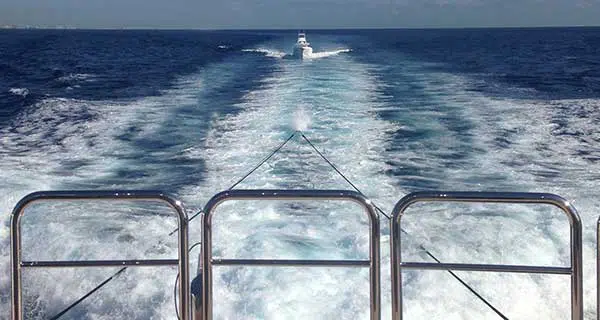
Our Mighty Tow Package is Tailored to Your Specific Yacht Tender Towing Rig Application
We use only the finest components available from the finest manufacturers in the World. Others may try to copy our tow line but there is nothing better than our Mighty Tow!
You need a towline and towing rig you can count on for the safely of your vessels and crew. Whether you are towing a yacht tender over extended periods at high speeds of just lazy weekend cruising, Mighty Tow will lay your worries to rest.

Upon request, we can provide strength certification to your insurance company for the rope and hardware used.
Contact Us for a quote today!
Typical Mighty Tow Setup

We use Two of America’s Best Rope Manufacturers to Make Mighty Tow!
Legs: First, we have two legs of New England Rope’s Premium Nylon for shock absorption. These lines use the highest grade marine nylon available, combining easy handling, flexibility, strength, good looks and long wear. The nylon is treated with unique water repellent coating for greater wet strength and improved abrasion resistance, even when wet.
Hawser: Next, we use Puget Sound’s Plasma Rope Spectra 12-strand for the tow hawser. Plasma 12-strand is the highest strength synthetic rope available. Plasma Rope is manufactured from Honeywell Spectra Fiber that has been enhanced by Puget Sound Rope’s patented re-crystallization process. Strengths are over 50% higher and creep is significantly less than that of standard Spectra 12-strand. This rope can be easily stowed, handles effortlessly and floats!
Floating Master Link: To compliment using line that floats, we take advantage of today’s fiber technology instead of using metal rings. The fibers we use are more flexible, have increased strength and reliability than the traditional method of using metal links.
Pennant: Mighty Tow! includes a nylon-covered Plasma pennant for the bow of your tender to make hawser attachment safe and easy.
Shackles: Mighty Tow! uses two of the most respected stainless hardware manufacturers: Wichard and Tylaska . We use Tylaska snap shackles to link the hawser to the pennant. Tylaska snap shackles provide the ultimate in strength, performance, and durability. The patented mathematical curvature of the release mechanism allows Tylaska shackles to be easily opened even under tremendous loads. Wichard’s high-resistance bow shackle, built for high load values, is used to attach the pennant to the towing eye of the tender.
**Rope Inc. advises to always have a proper tow-eye installed before towing any tender. Rope Inc. recommends Broward Machine of Ft. Lauderdale as a trusted tow-eye supplier. Visit their website: www.toweye.com or call (954) 920-8004 for a quote.
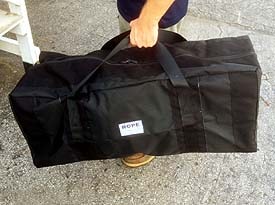
Rope Inc 268 SW 33rd Street Fort Lauderdale, Florida 33315 ( map )
We’re Here To Help You 888-596-7673 +1 954-525-6575 +1 954-525-5887
Home • Terms of Service • Privacy Policy Copyright © 2020-2022. All Rights Reserved – Rope Works Inc .

Your Guide to Choosing the Best Yacht Tender

A yacht tender is your ticket to freedom on the water. Once you drop anchor, it’s your ride to the fun and adventure that inspired you to buy a boat in the first place. Just imagine watersports, exploring, scuba diving, snorkeling and, of course, just relaxing in the warm sun!
Here’s a quick secret — your yacht tender is the most fun boat you’ll ever own.
We think a dinghy should not only reflect the beauty and precision of a yacht but also have the power and functionality to push fun to the limit. Is there any better way to celebrate dropping anchor than a cold drink and a zoom on the dinghy? Please, let us know if you find something.
Having the right tender lets you enjoy your boating experience to the fullest. There are a few things to consider when picking the best yacht tender for you, so we made this guide to help you through the process. We’ll go over:
- The benefits of rigid inflatable boats
- Pricing of small yacht tenders
- How to pick the right dinghy
- A brief overview of our models
There are lots of yacht tender options out there, and it’s essential to find the best one for you. Whether you’re looking for the best small boat or superyacht tender, we’ll give you the information you need to find the perfect dinghy for your life on the water. Read on to learn how to pick the perfect yacht tender.
The Benefits of Rigid Inflatable Boats
Rigid inflatable tenders have become the go-to choice for boaters. Here’s the deal.
Safety is always the first priority when you’re on the water. With the ever-changing conditions of an ocean environment, you need a tender that’s prepared to handle it all. There’s a reason the United States Coast Guard, military and police use rigid inflatable boats — they’re extremely seaworthy. The United States Navy describes rigid inflatables as extremely fast and buoyant. It employs them for Navy SEAL extractions and in intense ocean conditions.
Virtually unsinkable and super tough, rigid inflatable boats are hands-down the best choice for those who desire small yacht tenders.
What Do You Mean by Rigid Inflatable Boat?
Commonly called a RIB, a rigid inflatable boat has a hard hull and inflatable tubes for sides. This construction gives rigid inflatables the best of two worlds — they have the indestructible v-hull and tracking of a hard boat and the shock absorption of an inflatable boat. They’re as hardy as they are versatile. For example, we offer Navy-tough tenders with beautiful European craftsmanship that you can’t find anywhere else.

In addition to their durability, RIBs offer many other advantages. Here are a few more reasons why RIBs represent a smart investment.
RIBs Provide Stability
In a rigid inflatable tender, there’s little risk of tipping over because the inflatable tube and hard hull combination provide excellent stability, which is great for loading and unloading your family and your toys.
Also, the inflatable tubes significantly increase a tender’s capacity rating, meaning you can safely fit more passengers and gear on a RIB than on a hard dinghy. Known as the “Safe Working Load,” or SWL, this capacity is detailed by the manufacturer. To calculate the maximum number of people who should be aboard a small vessel, multiply a vessel’s length by width and then divide the result by 15.
RIBs Demonstrate Impressive Efficiency
Inflatable dinghies are much lighter than hard tenders. Weighing less means they’re much more efficient, and you can pack in a lot more adventure with the same amount of gas. Skip the line at the fuel dock, and head straight into your day.
RIBs Have Exceptional Safety
A great benefit of having an inflatable tender is you don’t have to worry about damage to your luggage or your precious cargo. We all have all experienced that awkward misstep aboard boats. When everything and everyone is moving around in the ocean, you may have trouble not fumbling every once in a while. It’s much nicer to catch yourself on the cushioned tubes of an inflatable than on hard fiberglass — we’ve tested this one!

When you’re going fast and having fun on the water, you don’t want to worry about safety. Knowing you’re in the safest dinghy lets you relax and focus on your adventure.
The United States Coast Guard has specific safety requirements for all recreational vessels. Adhering to these not only keeps your tender legal, but it also keeps you and your family safe. You can follow a simplified list of requirements.
It’s Easy to Use RIBs
For everyday boating operations, having an inflatable-sided dinghy is the best. You don’t have to deal with fenders or worry about all the bumps and nudges like on a hard tender.
Getting a spot at the dinghy dock often means playing bumper boats. If you have a dinghy with inflatable sides, you don’t damage other vessels, the dock, or your dinghy. Not to mention if you’re dropping someone off or tying up on your yacht, you can leave your dinghy unattended without worrying about damage to your boat.
Sometimes, it’s easier to tow your tender than it is to put it away — like if you’re changing to a nearby mooring or going to a secluded cove for the day. And unlike a hard tender, an inflatable can bounce off your yacht without damaging anything.
Anyone Can Maintain a RIB
Rigid inflatable boats need a lot less maintenance than hard tenders, partially because they’re less likely to get damaged in the first place. Inflatables don’t have fiberglass siding that can get cracks or holes, and their parts are easily replaceable. We offer replacement parts through our website and also have free online owners manuals for every model we carry.
RIBs are also much easier to keep clean than the scuff-prone fiberglass of hard tenders. The tubes are made of high-quality non-absorbent material that lets you easily wash off or wipe down your dinghy to keep it looking nice.
RIBs Are More Comfortable Than Hard Dinghies
Inflatable dinghies are bound to be more seaworthy than hard dinghies. The inflatable tubes absorb shock from wind waves and swell when you’re going fast, which gives you and your family a better ride.

Did we mention inflatable dinghies are just more fun? The incredible stability of the inflatable sides makes climbing out of the water a lot easier. And when you’re ready to cool off, the tubing makes for the perfect diving platform. You and your family can literally bounce off the walls.
How to Pick the Right Dinghy for You
Basically, choosing the best yacht tender comes down to three things:
- What tender your yacht can hold
- How many people will be aboard your tender
- How you’ll use your tender
Tender Sizing
Determining the right-sized tender for your yacht is an important decision. People sometimes go for the first inexpensive option they see, without realizing just how much time they’ll end up spending on their tender — but keep in mind, tenders are the unsung heroes of the boating world.
It depends on how you want to use your dinghy, of course, but a good rule of thumb is if you can go bigger, go bigger. You don’t want to overdo it, but people sometimes underestimate the size of the dinghy they’ll need and have to upgrade later. Leave yourself some extra leg room and you, your family and your guests, including loyal pets, will be happier in the long run.
Here’s what to consider when choosing the size of your tender.
What Size Dinghy Can Your Yacht Carry?
The size of your storage area is often a good indicator of how large your dinghy should be. If you’re not sure what size dinghy is best suited to your yacht, measure the tender storage area or contact your dealer — they will give you the specifications of your dinghy storage and a suitable range of tender sizes.

Also, keep in mind what the type of storage area for a dinghy on your yacht. If you have a dedicated dinghy garage where it will be out of the way when not in use, you don’t have to worry about getting the maximum size. But if your dinghy storage is on a hydraulic swim step, keep in mind you’ll need enough room to function around the dinghy while it’s aboard.
How Many People Will Be Aboard Your Yacht Tender?
If your yacht has room for a lot of passengers, you’ll probably want a dinghy that can transport a lot of people, too. When you’re doing ship-to-shore transportation for you and your guests, you don’t want to make five trips to the dock and back. Choose a tender that can hold enough passengers and cargo.
Again, assuming you have enough room to store it, we recommend assessing your dinghy needs and then considering the next size up to leave room for any extra guests, luggage or toys you may want to bring along. Extra space not only helps you operate your dinghy more safely, but it also leaves room for comfort.
What’s the Purpose of Your Dinghy?
That’s easy — fun! Pick your pleasure.
Are you all about watersports and exploration? Water skiing and searching for secluded beaches to relax the day away or scuba diving on beautiful reefs? Or maybe you’re just looking for a stable and dry ride to shore to shop, dine and discover. Whatever it is you like to do, a proper tender gets you into the mix.
Once you decide how you want to use your dinghy, you’ll have a better idea of which one you’ll want. If you like watersports, maybe a model with a little more size and power will suit you. If you just want a comfortable, dry ride to shore, maybe you’d prefer a model that’s smaller and quiet.
By the way, kids love dinghies — it’s a fact. Inflatable dinghies are awesome for towing the kids around on inflatable water toys, and they’re also a great way to teach the young ones how to drive a boat. But be careful — you’ll be asking “permission to come aboard” before you know it.
A Step-by-Step Review of How to Pick Your Yacht Dinghy
Follow these five steps to ensure you pick your RIB correctly:
- Determine the size of tender your boat can handle.
- Estimate the number of passengers and how much gear you’ll carry.
- Figure out how you want to use your tender.
- Browse and pick your favorite model .
- Hit the open seas.
Tender Pricing Vs. Quality
There are cheap dinghy options out there, but you often get what you pay for. A proper tender is not only a representation of your yacht but an integral part of your boating experience. The yacht may do the heavy lifting on a voyage, but the dinghy is your transportation once you’re on anchor or a mooring.
If you work hard to create a luxurious atmosphere on your yacht, you’ll want a dinghy that reflects the same attention to detail that you expect from a precision watercraft. Our tenders are all about functionality without sacrificing style. We know a quality dinghy is essential to your yacht — that’s why we don’t cut corners. We pride ourselves on using the latest technology with only the best materials and precision European craftsmanship.
What Dinghy Models Does BRIG USA Offer?
We manufacture all of our tenders in our 100,000-square-feet headquarters in Europe . A team of industry experts — including ex-military and aeronautical engineers — seasoned craftsmen and designers make sure that no detail is overlooked. We take pride in knowing we produce premium dinghies for amazing adventures around the world. We have a wide range of tenders to choose from to match your needs and preferences:
- Our Falcon Tender series ranges from 9 feet 6 inches to 15 feet 10 inches and can carry four to nine people, or 500 to 2,645 pounds. This series is the smaller range of tenders that we offer, but make no mistake — they have the power to get the job done and look good doing it.
- Our Navigator series is a step up in size from the Falcon series. They range from 15 feet 11 inches to 24 feet and can carry eight to 10 people, or 2,315 to 3,960 pounds. This line of tenders has increased size and range for bigger yachts and even more passengers, gear and good times.
- The Eagle series is our flagship line. With unparalleled design and function, they range from 11 feet 2 inches all the way to 32 feet 6 inches and can carry from four to 20 people, or 1,320 to 6,173 pounds. On our larger models, you won’t feel like you’re on a dinghy — they have the capacity, range and comfort for a full day of fun with the whole gang. No joke — these tenders turn heads.
Who Makes the Best Rigid Inflatable Boats? Find Them at BRIG USA
Yes, we’re biased. But for good reason — our dealers have the largest inventory of inflatable boats in the United States and the best inflatable yacht tenders. No one matches our prices or quality.
We have several options for high-quality dinghies for your needs and your price point. We offer premium quality at competitive pricing.
No matter what you’re looking for, BRIG USA has the right tender for your yacht. Check out our models and get out on the water.
Privacy Overview
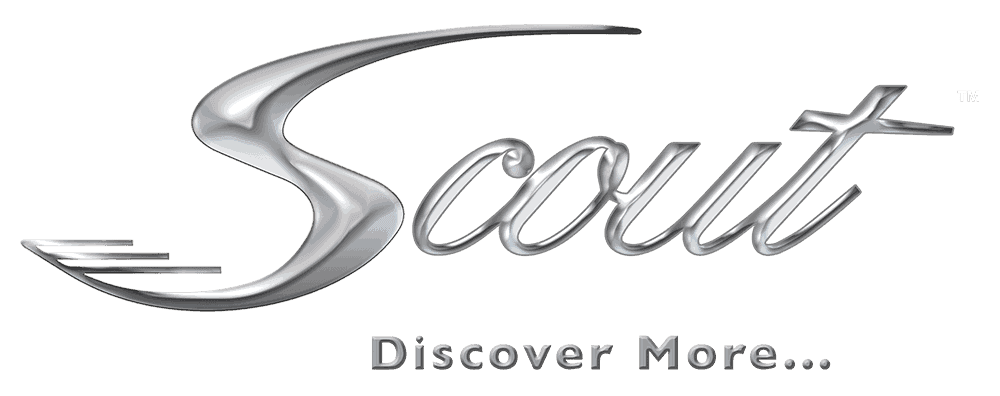
How To Tow A Tender Behind A Yacht
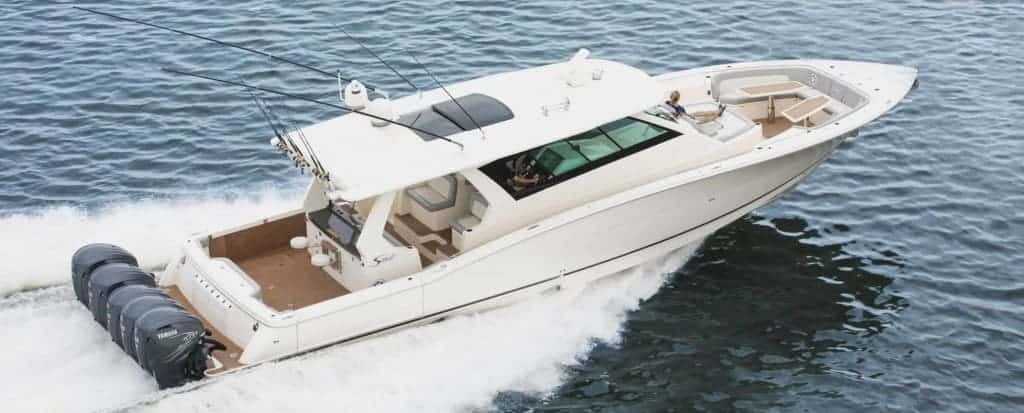
When most people take their smaller boat along on a yacht trip, they store it onboard. However, this can be a hassle when you’re ready to use it. It’s a pain to load the boat into the water, and later, hauling it back up again. Because of this, many yacht owners are realizing the ease of towing their tender instead of storing it on board. To do so safely, take a look at the proper steps on how to tow a tender behind a yacht.
Proper Markings And Lights For Each Vessel
Once you start moving with this rig, you’ll legally be considered a towboat. Towboats have different regulations and restrictions, and they also have a variety of required lighting to ensure proper safety. Both the yacht and the tender must have the proper markings and lighting to be a legal craft on the water, so be sure to talk with a boating expert to ensure your boat is up to standards.
Without the proper markings and lightings, your boat may not be legal for the water, and you could create significant safety issues. Always have the right lighting and markings long before you tow a tender behind your yacht.
Use Sturdy Cleats And Bitts
It’s essential that you use the right bitts and cleats when towing a tender, as the equipment will undergo a lot of pressure. If you’re using low-quality equipment, it could snap or break, which means you’ll have to retrieve your tender. Breaking equipment can also create a safety issue and could cause significant injury.
It’s also important to note that the small eye that’s commonly installed at the front of a tender is often inadequate for proper towing, so you may need to replace this item—although Scout Boats models all come with a top-quality tow eye.
Use Floats On The Line
One major safety issue for towing a yacht is the potential for tow lines to become wrapped in the yacht’s prop. To reduce the chances of this occurring, make sure there’s a float on the line itself. This will keep the rope at the surface of the water and will significantly reduce the chances of having your rope caught in the prop.
Don’t Pull A Boat That’s Too Big
You have to make sure the tender you’re pulling isn’t too big for your yacht. A general rule of thumb is that your tender should not be longer than the width of your yacht, as larger boats will create drag and reduce the speed, efficiency, and ride quality.
Get the Boat You Deserve with Scout
Are you looking for a great yacht tender? Contact Scout Boats today to learn more about our excellent selection of luxury fishing boats and tenders. With outstanding engineering and world-class designs, Scout Boats is a leader on the water. You deserve the finest features and amenities on your boat, so get in touch with us today!

Build Your Scout
Click below to build your dream Scout model.
Marine News from the Great Lakes
Ask the expert: towing tenders.
Published: Monday, July 30, 2018 By: Cary R. Wiener, President of Pantaenius America Ltd.
Cary R. Wiener is President of Pantaenius America Ltd. and a maritime lawyer who has worked on many famous cases, including the Exxon Valdez. He is licensed in all fifty states and is passionate about safety on the water.
We recently purchased a tender for our yacht. It’s too heavy to hoist aboard, so we’ll be towing it. What should we know before we tow?
Many yacht owners tow a tender so they’ll have a smaller boat to jet around in or to go ashore, but towing tenders can be dangerous and risky because so much can go wrong. The tender you’re towing could get swamped - or worse, break loose and get lost at sea. It could smash into the stern of your yacht, causing extensive damage. The stresses incurred by a towed vehicle could rip out the cleats on the towing vessel and/or the tender or the mother ship could run over the towing line and chew up the yacht’s running gear.
Here’s how to avoid these risks:
Get your insurance company’s consent.
You never want to tow a tender without proper coverage, and most yacht insurance companies have conditions you must meet when doing so. At Pantaenius, for example, we require that tenders be constantly watched — either by a crew member or a camera. Get these stipulations in writing, and follow them to the letter. Otherwise, if something goes wrong, any loss or damage will not be covered.

Make Sure You Have the Right Equipment
You’ll need at least 100 to 150 feet of towline so you can adjust it for varying conditions. Double braided (braid-on-braid) nylon is your best choice because of its superior combination of strength, stretch, and chafe resistance. Don’t make the mistake of using three-strand twisted nylon instead, assuming it will be stronger. While it does boast excessive stretch, it also has dangerous snap-back action — imagine a huge rubber band — when it breaks. Double braided nylon is stronger and will not kink.
Some yacht owners prefer using polypropylene because it floats. However, it’s not as strong, has little elasticity, and isn’t as efficient as double braided nylon at absorbing heavy shock loads that are transferred to fittings on both the towed and the towing craft. Polypropylene is also super stiff, making it difficult to tie knots that will hold fast.
Having the right hardware is also critical. You’ll need sturdy cleats, or bitts, that are through-bolted to the deck. And, make sure these have strong backing plates (which you can add) to handle the substantial weight from the tow. Otherwise, the tender could yank the cleats right out of your yacht’s deck.
At the other end — the bow of the tender — hardware is equally important. Make sure it has a reinforced towing eye or a bow cleat where you can safely secure the line. Most tenders that are lost while towing are lost because this attachment failed.
Rig It Up Right
The best way to tow a tender is to use a bridle arrangement. A bridle is a separate piece of double braided nylon line that’s attached to both rear cleats of the towing vessel. Leave enough slack so that the bridle becomes a “V” shape when the towline is attached to its center. Also, make sure you attach the bridle to D-rings versus tying it to a single line without a bridle. This will help distribute the strain over as wide an area as possible, plus enable the line to shift as the tender changes heading.
When towing hard-shell tenders, rig a similar bridle around the hull or superstructure of the vessel you’re pulling.
Since double braided nylon doesn’t float, the towing bridle needs to be buoyed with two or more floats. This will keep the towline from sinking and getting swept under the cruising yacht, then potentially becoming entangled with the rudder or propeller. It will also help make the towline more visible to other boaters.
Lighten Your Load
When possible, remove the motor from the tender before towing, and store it safely aboard the mothership. The same goes for oars, cushions, bailers, and other items that are apt to come loose and go flying if the tender bounces about.
Be Prepared to Let Go
Sometimes emergencies arise that call for ditching the tender to protect your yacht. Some skippers keep a knife handy to cut the bridle, but since there’s a lot of energy stored in that nylon when it’s under load, your best bet is to use a snap shackle at the end of the towline.
Watch Your Speed
Start off gently to produce a steady pull until you get up to speed. The goal here is to minimize stress on the towline, boats, and hardware. Your cruising speed should not exceed seven or eight knots. Otherwise, the tender will start to zigzag, and it’s easy to flip over a lighter tender when going too fast. In rough seas, when in high-traffic areas, or when mooring or docking, slow down to two-three knots.
Get in Sync
As a rule of thumb, lighter tenders should ride just ahead of the stern wave — or rooster tail — inside the first wave of wake. For hard-shell tenders, or if swells increase to above four-six feet, you will need to let the tender out, back to the second wave astern.
Regardless of tender size or weight, adjust the towline at the stern cleats so that both boats are in the crests and troughs of waves simultaneously. This may be impossible if seas are rough, but at least try to avoid a situation where the tender is struggling up the back of one wave while the mother ship is running down the front of another wave. This, or the reverse, creates tremendous loading, which causes dangerous surging and thus shock loading by the tender.
Whenever you tow a tender, your yacht becomes a towboat and the tender a towed vessel under the Rules of the Road navigation regulations. This means proper navigation lights are required for both vessels. Using lights at night or in poor visibility is a smart move anyway to avoid having another vessel run over your towline.
Choose Mooring over Docking
In busy harbors, high-traffic areas or while anchoring, you’ll want to draw the tender closer to allow for better handling in close quarters. Keep in mind that docking with a tender in tow can be tricky and challenging, even for seasoned skippers. So, to avoid potential hazards, it’s a better, and far safer, idea to moor.
Have a question about yacht safety or insurance? Send it to [email protected] .
This article first appeared in the Summer Issue (Jul/Aug) 2018 of Great Lakes Scuttlebutt magazine.
tags: Insurance , Towing , Water Toys

Go back | Show other stories
Most Recent Related Video
Easy Guide Floats
Browse Video Gallery
Keyword Search

Browse News by Region

Great Lakes

Lake Michigan

Lake Ontario

Lake Superior

Beyond the Lakes

Browse by Topic

Check the Map!

Check it out!

TOWING SYSTEMS
Conception & design.
All our towing lines are carefully conceptualized according to the characteristics of the yacht and the tender or toys to be towed.
You will receive a detailed towing diagram with every towing line delivered.

TENDER TOW LINES

TENDER BRIDLE
Depending on the number of tow eyes present and reinforced adequately for towing, a tender painter or tender bridle is made. The line or bridle should float and not exceed the length of the tender to prevent it from jamming the engine when it is accidentally run over.

The main boat bridle provides the stretch needed to absorb snatch loads whilst towing. Adjustable nylon chafe protectors are included where it passes through fairleads and the eyes connected to the tow leg are protected with braided Dyneema sleeve covers. Length markers ensure paralell length of each bridle leg.
The tow leg lies between the tender painter/bridle and the main boat bridle. It floats, has good visibility and a high working load limit. Dyneema is a great match for this line.

SOFT SHACKLES
Instead of using extremely heavy stainless steel hooks or shackles to link your towing system, Dyneema soft shackles are a great alternative. They float and don't damage the deck when hauled aboard.

OTHER TOW LINES
EMERGENCY TOW LINES
An emergency tow line for the main yacht is, as the name suggests, not a line in daily use, but only used in cases where the main yacht has to be towed by another vessel. It is made of floating material – often polypropylene – and consists of a bridle and a tow leg. The longer the total length of the system, the better, as you don't know which vessel will come along to tow you. The absolute minimum length should be at least the total length of the yacht.

TOY TOWING LINES

Each yacht has different tenders and toys and a unique way of deploying them. We design our toy towing lines in cooperation with our clients and the result is a perfect fit for the needs of the yacht. Coloured floating lines and buoys or smaller floats are often used.

STORAGE BAGS

All our tender and toy towing systems come with a practical storage bag.

REQUEST YOUR QUOTE TODAY
Send us the specifications of your yacht, tender or toys and request your personalized quote today. We ship to wherever you need it.
_edited_edited.png)

A Guide to the Best Tenders for Yachts
Tenders for yachts in a nutshell
A tender is a boat that services a larger vessel (referred to as the mothership ). A tender can take many forms, delivering a wide range of conveniences.
Historically called a ‘ship’s boat’, tenders have supported large vessels for centuries. Guest transfers, refuge boats, landing crafts, stowed on deck or towed astern – little has changed!
Whilst the vast number of tenders employed by smaller yachts are typically rigid inflatable boats, there is a multitude of vessels considered indispensable by the modern-day superyacht.
How we categorise tenders
We’ve been specialising in building boat tenders for over a decade, yet with such a degree of cross-over and with a seemingly endless request for custom configurations, categorising tenders remains a challenge.
Nonetheless, at the top-most level, we categorise all tenders under one of the following three hull types:
Fully Inflatable A lightweight vessel relying solely on inflation for buoyancy.
Rigid Inflatable A vessel with a hull constructed from rigid materials such as aluminium or fibreglass, supported with an inflatable or foam collar for added buoyancy in high seas.
Rigid A fully rigid hull without a buoyancy collar of any type.
Sub-categories
In addition to hull type, we can identify most yacht tenders under the following sub-categories:
⌾ Open ⌾ Chase ⌾ Classic ⌾ Foil ⌾ Catamaran ⌾ Dive
What is an open tender?

An open tender is principally a single-deck boat with no enclosed cabin. Chiefly a guest transfer boat with ample seating both forward and aft, open tenders are day boats without accommodation above or below deck.
Whilst we see a lot of open tenders dedicated to guest transfer, by their very nature, they can also incorporate centre console boats, some dive boats, landing crafts, and even limousines.
What is a chase tender?

As the name suggests, a chase tender—which can also be an open tender—follows the mothership.
Chase boats can take on many guises since their main attribute is size and so, as a result, are generally not stored on board but instead towed astern.
Often very angular in design, with excellent seaworthiness, chase boats need to be able to withstand the rigours of being towed by the mothership. Whilst a lot of large chase tenders can be operated entirely independently, towing very long distances (such as transatlantic) is not advised. That’s where a full-blown support vessel comes into its own.
What is a classic tender?

Tenders with the hallmark of classic design are styled with an exquisite, continuous line from the head to the heel.
Echoing the lacquered freeboards of a Riva Ariston or the flawless veneers of a Hinckley picnic boat, a modern classic from the likes of J Craft or Wajer will feature a gracefully tapered form, avoiding right angles altogether.
What is a foiling tender?

Combining thrust with lift (as an aeroplane does), high-speed tenders have the opportunity also to become airborne.
Less drag, higher speeds and lower energy consumption are the key advantages, although from a guest comfort perspective, being elevated above a big swell scores very highly.
What is a catamaran tender?

Largely associated with utility boats, catamaran tenders (not to be confused with catamaran sailboats) present superyacht owners with a number of major advantages over their mono-hulled counterparts.
Favoured as a utility vessel, a twin-hulled catamaran can be built much wider than an equivalent-length vessel with a mono hull.
A twin-hulled catamaran offers increased stability and, therefore, a more comfortable ride in bigger seas. Thanks to a smaller surface area, there’s also less drag which results in faster speeds and higher efficiency.
What is a dive tender?

We build tenders optimised specifically for scuba diving, however, given the range of crossover in the market, the likes of amphibious boats, beachlanders, some centre consoles, landing crafts, open tenders, RIBs and utility boats can also work perfectly well for diving.
Storage, floor space and, most importantly, the convenience of easy access to the water are key attributes of a versatile dive boat tender.

The right tender for the job
So far we’ve categorised our tenders — now to define which tender is best suited to which scenario.
Amphibious Tender
Can be: Rigid, Rigid Inflatable // Open, Chase // Tow or stow

Sharp stones, steep drop-offs, inclement weather, and changing tides needn’t worry your crew when you have the luxury of an amphibious tender. Visit almost any secluded cove or spit with virtually no risk of becoming stranded or beached.
Go where other boats simply wouldn’t dare, landing on shorelines in rough breaks and on rugged terrain. Be sure to do your homework, though, as most beaches and marinas will require permission to stroll out the sea on an amphibious tender.
Beachlander Tender

We are all about time spent on the water, but the sensation of stepping off a tender onto the warm sand is in itself a joy to behold. We don’t mean clambering over the side of a rib and bouncing awkwardly into the shallows. We mean stepping from a dry boat onto dry sand.
Whether you intend to spend the day in your swimmers or are off for an island excursion, getting wet feet before you begin should be a choice.
We offer a beachlander option on any of our aluminium rigid inflatable boats. A compact, button-operated bow staircase gives both guests and crew quick and easy access to the shore with all the versatility of a rib.
Center Console
Can be: Rigid // Open, Chase // Tow or stow

Synonymous with the Florida Keys, the traditional centre console (or center console in the US), is typically a single-deck boat with the helm in the middle.
Geared towards recreational fishing, the centre console maximises the floor space while, crucially, allowing for full access around all sides of the boat. On smaller boats, seating is often sacrificed for floor space, while larger centre consoles fitted with cabins creep into the Sports Fisher sector.
Not intended to be an especially dry boat, both crew and guests are often exposed to the elements. The upshot is that centre consoles and, more so, sports fishers, tend to offer huge power, which is especially useful for long day trips from the mainland.
High-performance

We know for certain that superyacht owners have a thirst for adrenaline, having been asked to design a Shadow Boat capable of carrying a 50’ cigarette boat.
‘Go-fast’ boats, as the name suggests, are built exclusively for speed. More commonly known as ‘cigarette boats’ due to their shape, go-fast boats are not for the faint-hearted.
A craze immortalised by the Cigarette Racing Team, modern-day cigar boats can achieve speeds of over 100 knots. Largely impractical as a conventional superyacht tender, the range of high-performance boats have thankfully branched more into Centre Consoles. In turn, this presents superyacht owners with a high-performance chase boat of an almost unimaginable spec.
Landing Craft
Can be: Rigid, Rigid Inflatable, Inflatable // Open, Chase, Catamaran, Dive // Tow or stow

A vessel with very much a military feel, a landing craft tender is designed to carry everything, including vehicles from yacht to shore.
With our ROAM Landing Craft , a button-operated super-strength bow ramp enables drive-on drive-off capabilities ideal for disembarking heavy items where you don’t have lifting facilities at shore.
Our landing crafts are built with a catamaran hull for enhanced stability. We also manufacture high-quality fold-up motorised boats .
Limousine Tender
Can be: Rigid // Open, Classic, Foil // Stow

Surely the ultimate statement of sophistication — the limousine tender is the pinnacle mode of guest transfer.
Ranging from 6-14m and accommodating up to eighteen guests in consummate luxury, an often fully enclosed guest cabin will mirror the furnishings of the mothership.
Picnic Boat
Can be: Rigid // Chase, Classic // Stow

If leisure cruising and lunching was your only pursuit, you’d surely have a picnic boat. The quintessential day cruiser, a picnic boat is unequivocally designed for rest and relaxation on the water.
Inspired by the lobster boats of Maine, where the sloping rails from bow to stern made it easier for lobstermen to haul in their traps, the symbolic Picnic Boat represents everything exciting and romantic about a day out on the water.
Can be: Rigid Inflatable // Open, Dive // Tow or stow

The workhorse tender of any yacht is the Rigid Inflatable Boat (RIB). Robust, versatile and highly manoeuvrable, RIBs typically offer the characteristics of speed, buoyancy and good handling on high seas.
A foam or inflatable collar provides extra buoyancy in the event of taking on water, while in the case of our RIB boats —which have a high deadrise—also acts as a spray rail for keeping the deck dry. Popular with superyachts, RIBs can be towed or stowed and used for a wide range of purposes.
Our Deep-V RIB boats are constructed from aluminium. A highly adaptable material, we are able to build custom RIBs from scratch without incurring expensive and time-consuming tooling adjustments.
Can be: Rigid // Open, Dive // Stow

Nothing allows us to explore an affinity with water quite like the experience of wakeboarding, wake surfing and water skiing.
We are an official partner of the world-renowned Nautique boats and specialise in their customisation and supply specifically to superyachts.
SOLAS Rescue Tender
Can be: Rigid Inflatable, Inflatable // Stow

In accordance with the International Convention for Safety of Life at Sea (SOLAS), all ships over 500GT (typically 50m+) must carry at least one fully compliant SOLAS Rescue Vessel (and a complement of life rafts). The rescue vessel must be stowed onboard and cannot be towed astern or located on a support vessel.
SOLAS Rescue Vessels must be able to carry five seated persons and a person lying on a stretcher. Vessels must have an automatic self-righting capability and the engine must be able to be restarted following a capsize. Stable in a seaway (and deployable when the mothership is doing 5 knots), rescue boats may be either rigid or inflated and need to be operable in water that is 1-30°C. They also need to be able to start in -30°C air temperature.
First adopted in 1914, the SOLAS Convention was initiated as a direct response to the Titanic disaster. The Convention in use today is often referred to as the “SOLAS, 1974, as amended”.
For any help and advice relating to SOLAS requirements, contact our team who have a depth of knowledge on the subject.
SOLAS Lifeboats
Can be: Rigid // Stow Unlike a SOLAS Rescue Vessel that can be inflatable or rigid hull, a lifeboat must have the latter.
Painted bright orange—or Pantone 144—a lifeboat can have a LOA no less than 7.3m.
Sports Fisher
Can be: Rigid // Tow

A close relative of both the Central Console and High-performance categories, a Sports Fisher is a dedicated recreational fishing boat. Despite there being a range of boats within this category, it’s the Flybridge Sports Fisher that is most synonymous with the name.
Large boats, often up to 25m, the archetypal fisher is perfectly suited to lengthy, deep-sea fishing trips. Typically built with berths, heads, a galley and a tower (perhaps even a live bait tank, too), a Sports Fsher is for serious big game fishing enthusiasts.
It’s quite a commitment for a superyacht when a large open or utility tender with rod holders would probably just as effective if big game fishing was less of a priority.
Utility Tender
Can be: Rigid Inflatable, Inflatable // Open, Chase, Catamaran, Dive // Tow or stow

A utility tender is the most versatile boat on the list. Ticking almost every box, a utility boat is somewhat open to interpretation. As much an entire category as it is an individual tender, a utility boat could easily take the form of a landing craft or open RIB.
Both promote an open deck space and satisfy the needs of crew in all manner of tasks, including the general movement of equipment and vehicles, refuge and provision runs, and guest and crew transfers.
Discover more from Superyacht Tenders and Toys
Subscribe now to keep reading and get access to the full archive.
Type your email…
Continue reading
You must be logged in to post a comment.
Tender Towing

Tow Bits and Hawser's We install custom fabricated tow bits and hawsers for all sizes of yacht tenders. Our tow bits are designed and fabricated to handle the stresses of ocean towing. We use only 316 SS material, through bolted with SS bolts and aluminum backing plates. All our tow hawser's are made with New England Ropes double braid, Samson AmSteel, custom chafe gear and all 316 SS Hardware. We have installed custom fabricated tow bits on the following makes of vessels: Contender, Intrepid, Boston Whaler, EdgeWater, SeaCraft, Novurania, Nautica, and Protector, to name a few. Please contact us for a proposal on your towing bridle needs.
Select Service
Towing lines
Tender towing line.
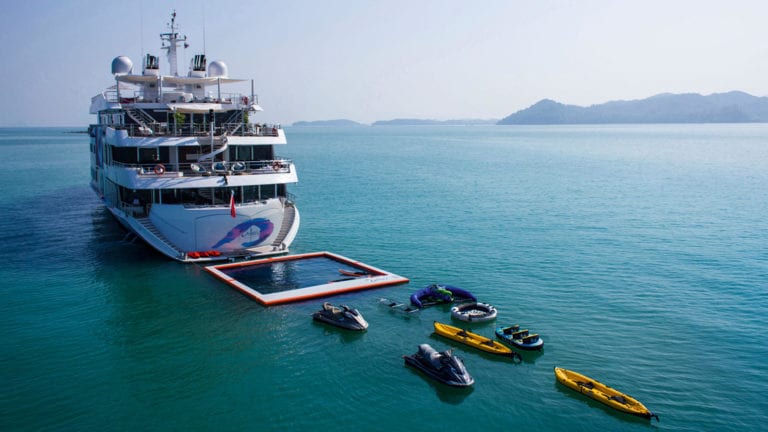
Our Products
Mooring lines, mooring accessories, ropes for lifting, running rigging, accessories, other cool stuff.
Your name *
Your phone number
Your email address *
Your inquiry

Owner’s gain, crew’s pain when yacht tenders towed
In 30 years of big boating, I had never towed a tender until last season. Now that I have done it, I will n ot go back to little blow-up boats. (I used to call them inflatables, too.)
But I do realize that towing a large tender is not the favorite addition for captains and crew, and I fully understand why. Unfortunately, my boat is not yet big enough to keep a pair of 30-foot tenders in a climate-controlled garage below decks like, say, Steven Spielberg on M/Y Seven Seas. (Note the yet in that sentence.)
Last season, we towed a 30-foot center console from Florida to Grenada and back. It was a dramatic improvement for the overall guest experience compared to the 18-foot inflatable on the sun deck.
We could anchor in one place and see the area by tender in some pretty choppy water without torturing the guests or moving the big boat. We caught some big fish and the ladies were much happier not bouncing around and getting wet on many trips. It was also nice to have two decent tenders so that a group could go to the beach while others went to fish.
When I proposed the towed tender idea to our captain at the time, he was understandably not excited. For him, it was another project with its own list of items to break and maintain. It would be a new headache, something to worry about in transit, and potentially another crew member or fraction thereof to manage, house and feed. Completely normal concerns.
The boat’s insurance company was also not enamored with the idea. The premiums were not so bad, but the policy had limitations on cruising area, nighttime towing and a long list of other exclusions rendering the coverage almost non-existent.
The insurers were also concerned about the captain’s experience in towing, which fortunately he had in spades. He knew exactly what we were getting into; both the agony and the pleasure.
My reaction to both captain and insurance company was that we should try it and see what happened. We set up the towing rig correctly and had a detailed towing plan in place, including placards in the wheelhouse. There were lights, cameras and a GPS tracker on the tender. We added anything the captain recommended to make towing the least aggravating and safest possible. A slight crew adjustment was also made in that the mate became a licensed captain as well.
The results were spectacular. Other than a broken foredeck hatch on the tender in heavy seas off St. Lucia, it was a near flawless experience. Guests were thrilled, the beer was colder and the fish bigger. For divers, the experience was also better. We could go to farther dives, and egress from the water for old fat guys like me was much easier.
Once again, as in all owner/crew relationships, it required full disclosure and discussion. It is incumbent upon the captain to help the owner make an informed decision; the risks, expense and rewards.
I cannot now imagine cruising the islands without a towed tender. It enhances the overall experience considerably and is worth every penny of the additional cost. And when it comes time to reposition any distance, we’ll be shipping it. There’s just too much potential for loss or damage on a long trip when we’re not stopping and using it.
Like all things boating, it is not cheap to tow a tender, but as a good friend of mine has said on construction projects, if you are going to do it, do it right. Swallow the dog, swallow the tail.
With the proper planning, crew and precautions, a towed tender is a fabulous addition to any boat. Yes, there is the opportunity to lose a tender when towing in heavy seas, but it is more likely to get stolen in many places. It is worth the risk.
Bow west, high tide only.
Peter Herm is the pen name for a veteran yacht owner who is an entrepreneur based on the East Coast of the U.S. Contact him through www.the-triton.com/author/peter-herm .
Related Posts
Lürssen launched, on April 5, the 590-foot (180m) M/Y Azzam, the world’s largest yacht. Steel was cut for the hull 28 months ago. The yacht…


- Jetski sling buyers guide
- Seadoo Jetski Lifting Slings
- Yamaha Jetski Lifting Slings
- Mooring Whip Guide
- Carbon Tender Mooring Whips
- GRP Tender Mooring Whips
- Mooring Whip Bases & Mounts
- Carbon Telescopic Boat Hook 6m
- Carbon Telescopic Boat Hook 4.5m
- Carbon Boat Hook 2.0m
- Carbon Boat Hook 1.5m
- Universal Jetski Chocks
- Seadoo Spark Jetski Chocks
- Seadoo ST3 Hull Jetski Chocks
- Custom Tender Chocks
- Universal Tender Chocks
- Williams Tender Chocks
- Princess Yacht Tender & Jetski Chocks
- Jetski Trolley
- Super Low Jetski Trolley
- Jetski Cradle
- Low Profile Deck Padeye Kits
- Flush Fit Deck Padeye Kits
- Bow Stern Tie Down Kits
- Tender Overstrap Kits
- 25mm Marine Stainless 316 Ratchet Straps
- 35mm Marine Stainless 316 Ratchet Straps
- 50mm Marine Stainless 316 Ratchet Straps
- 316 Stainless Cam Straps
- Davit/Crane Tender Lifting Slings
- Passerelle Tender Lifting Slings
Tender Towing Bridle
- Carbon Dock Steps
- GRP Dock Steps
- Folding Dock Steps
- Suspended Dock Steps
- Retractable Dock Steps
- Boarding Pole
- Inflatable Jetski Docks
- Inflatable Seabob Docks
- Superyacht Inflatables Leisure Platforms
- NautiBuoy Leisure Platforms
- Jobe Leisure Platforms
- SeaRaft Leisure Platforms
- AquaGlide Leisure Platform
- Superyacht Inflatables Sea Pool
- Jobe Sea Pool
- Superyacht Inflatables Maintenance Platform
- NautiBuoy Maintenance Platform
- Sea-Raft Maintenance Platform
- Aere Maintenance Platform
- Custom Inflatable Docks
- Superyacht Inflatables Island
- Nautibuoy Island
- AquaGlide Island
- Tender Mooring Whips
- Tender Chocks
- Tender Tie Down Kits
- Carbon Boarding Pole
- Carbon Boat Hook
- Davit Tender Lifting Slings
- Marine Grade Ratchet Straps
- Jetski Lifting Slings
- Jetski Chocks
- Jetski Tie Down Kit
- Inflatable Jetski Dock
- Jetski Mooring Whips
- Fun & Relax Afloat
- Inflatable Yacht Slide
- Aquaglide Inflatable Yacht Toys
- Superyacht Inflatables Aqua Park
- Wind watersports
- Paddle watersports
- Princess Yacht Deck Accessories
- Jetski Tie Down Kits
- T1 Transit Documents
- Orders / Shipping
- Shipping after Brexit
- Payment Options
- Superyacht PWC
- Marine Education - RYA Training Centre
- Superyacht Deck Equipment
Introducing the Tender Towing Bridle: Your Solution for Safe and Secure Towing!
Are you in need of a reliable and efficient solution for towing your small tender? Look no further than this high-quality Tender Towing Bridle.
The Tender Towing Bridle is specifically designed to provide a safe and secure towing experience for your tender (up to 1500kg). Made from durable and weather-resistant materials, this towing bridle ensures maximum strength and longevity in marine conditions.
Key Features:
1. Strength: The towing bridle is engineered to handle the demands of towing, with a high weight capacity and reinforced construction.
2. Easy Attachment: With user-friendly clips, the towing bridle can be easily attached to your tender and towing vessel, ensuring a hassle-free setup.
4. Enhanced Safety: The bridle is designed to distribute the towing load evenly, reducing stress on your tender and providing a safer towing experience.
5. Versatile Compatibility: Tender towing bridle options suitable for a wide range of tender and dinghy sizes and types (up to 1500kg), making it a versatile choice for various watercraft.
Whether you're towing your tender for maintenance, transportation, or leisure activities, our Tender Towing Bridle is the reliable solution you can trust.
For more information and to order your Tender Towing Bridle, please view the options below:

Small Tender Towing Bridle
Length: 270cm
Maximum Load Capacity: 500kg
Included: Tow bridle & storage bag
excl. VAT and shipping costs
Free shipping to the following countries: Show more Show less
- Ships within 3 - 5 working days from invoice payment, Submit Quote Request to get shipping costs 1

Medium Tender Towing Bridle
Maximum Load Capacity: 1500kg
- Submit Quote for Lead Time and Shipping Costs 1
- Scroll to top
UFI approval for Moscow Boat Show
- Inspiration
Related News
Popular news this week, popular news this month, latest news.
- Yacht Charter & Superyacht News >
Written by Zuzana Bednarova
September 17 was marked by meeting of the UFI Executive Committee. During the event, the Committe approved the admission of Crocus Expo IEC as a full member of UFI in categories of “Exhibition Organizers” and “Exhibition Centres. Moscow Boat Show has been granted the status of “UFI Approved Event”.
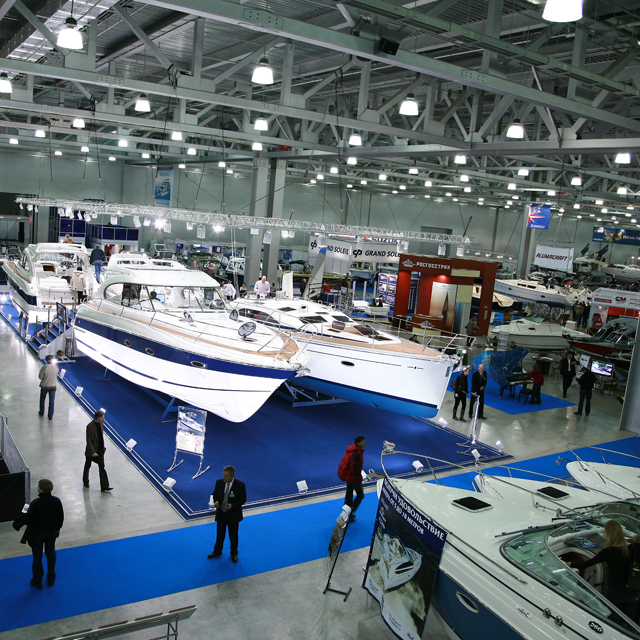
Moscow Boat Show
UFI, The Global Association of the Exhibition Industry is the association of trade show organizers, fairground owners, national and international associations of the exhibition industry, and its partners. As of 2012, it has 608 members in 224 cities from 86 countries covering 6 continents. The association members are responsible for the management and operation of over 4 500 profile events. The association represents more than 1 000 000 of exhibitors and more than 150 000 000 visitors.
The Crocus Expo Exhibition Centre is a listed member of the International Association of Congress Centres (AIPC), the Russian Union of Exhibitions and Fairs, the Guild of Exhibition and Fair Operators by the Moscow Chamber of Commerce and Industry. Donald Tramp fund has awarded Crocus Expo IEC Diamond Excellence Award.
Crocus Expo IEC is an ideal venue for running of large international and national exhibitions of different profile including congress events, conferences and scientific symposiums.About 50% of all exhibition events of Moscow take place in Crocus Expo and average exposition space load comprises 85%.
Moscow Boat Show provides the perfect platform from which to preview new products, evaluate market trends, and establish long-lasting and commercially profitable partnerships. Despite the dynamic changes taking place in Russia and the rapid growth of the yachting sector, the show continues to complement and reflect the industry’s demand and is a promotional opportunity not to be missed!
The exposition space will increase up to 45 000 sq m in 2013. More than 350 Russian and foreign companies will participate in the show. The scale of the project confirms confident positions of its positive development.
Moscow Boat Show is the largest project in Russia presenting all the best in the world of yachting. The exhibition annually shows high level of attendance and has already proved as significant and noteworthy event in the world of yachts and boats.
Please contact CharterWorld - the luxury yacht charter specialist - for more on superyacht news item "UFI approval for Moscow Boat Show".
- Charity & Fund Raising
- CharterWorld News
- Classic Yachts
- Coronavirus
- Cruise Ship
- Ecological Yachts
- Expedition Yachts
- Expert Broker Advice
- Feature Superyachts
- Interior Design
- Legal & VAT Yacht Issues
- Luxury Catamarans
- Luxury Gulet
- Luxury Phinisi
- Luxury Trimarans
- Luxury Yacht Design
- Luxury Yachts
- Marinas & Harbours
- Marine Ecology
- Marine Electronics
- Marine Equipment
- Mega Yachts
- Modern Yachts
- Motor Yachts
- New Launch Yachts
- New To Charter
- Open Style Sports Yachts
- Private Jets
- Sailing Yachts
- Social Media
- Sports Yachts
- Superyacht Crew
- Superyacht Photographers
- Superyacht Products & Supplies
- Superyacht Refits
- Superyacht Reviews
- Superyachts
- Uncategorized
- Yacht Builders
- Yacht Charter
- Yacht Charter Destinations
- Yacht Charter Picks
- Yacht Charter Specials
- Yacht Delivered to Owner
- Yacht Designers
- Yacht Events & Boat Shows
- Yacht Fashion
- Yacht Industry News
- Yacht Photos
- Yacht Racing
- Yacht Racing & Regattas
- Yacht Safety Equipment
- Yacht Support Vessels
- Yacht Tenders
- Yacht Videos
- Yachting Associations
- Yachting Awards
- Yachting Business
- Yachts For Charter
- Yachts For Sale
Quick Enquiry
Superyacht news:.
Email Your Yachting News to: news @ charterworld.com
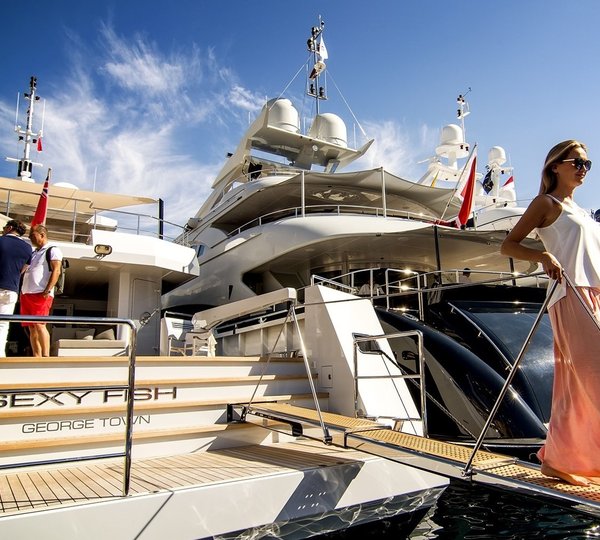
Luxury Yachts At Events

The Caribbean
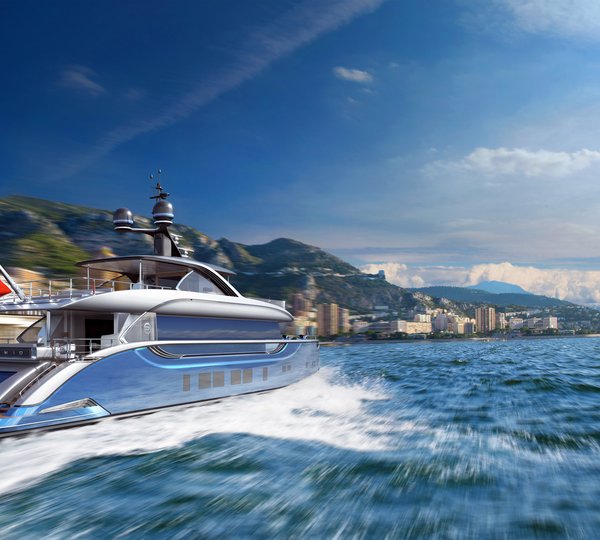
The Mediterranean
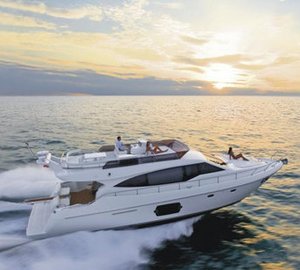
Ferretti Group announces its presence at Moscow Boat Show 2013
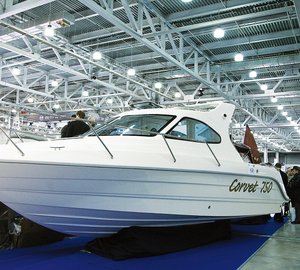
Dates for the 6th International exhibition of boats and yachts Moscow Boat Show 2013 revealed
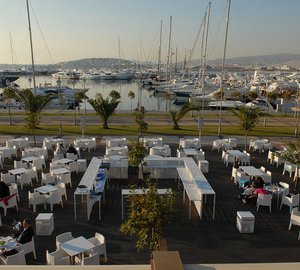
VIP Mega-Yacht Destination Flisvos Marina to participate in Moscow Boat Show 2013

Official Opening of Moscow Boat Show 2013 on March 12
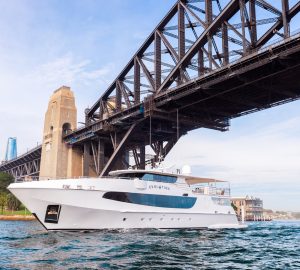
39m luxury yacht EVOLUTION for charter on Australia’s east coast
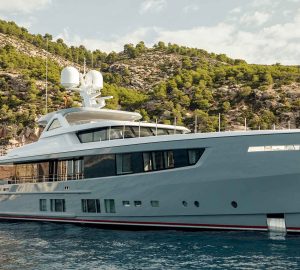
Charter Special on board 36m luxury yacht CALYPSO I from Italy to Greece
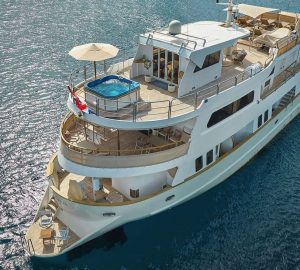
Croatian charter yacht LA PERLA offering 10% discount on exclusive vacations in the Adriatic
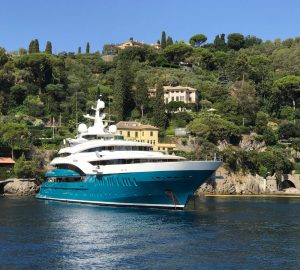
Charter a yacht during the Monaco Historic and F1 Grand Prix festivals and soak up the atmosphere from on deck
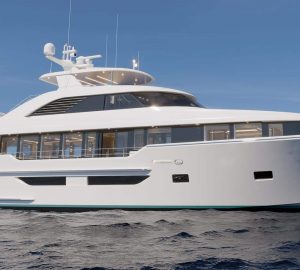
Westport announce the first hull of their 36m W117 range is nearing completion

Superyacht LAUNCHPAD previously Feadship 1010 delivered
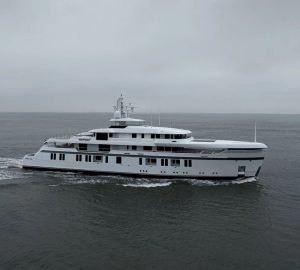
65m Feadship superyacht PROMISE.D delivered
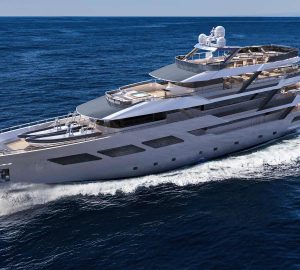
Discover our Top 10 brand new yachts available for charter worldwide this year
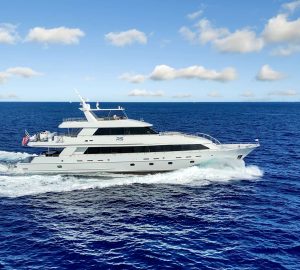
Florida charter yacht REAL SUMMERTIME offering 10% discount
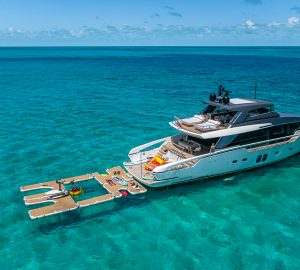
Discover summer in New England aboard a luxury charter yacht: Escape to this beautiful northeast corner of the USA
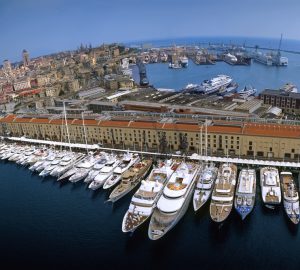
Looking ahead to the 2024 MYBA Charter Show in Genoa
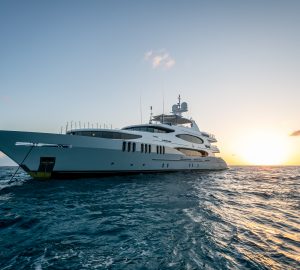
Last minute yacht charter deals in the Bahamas
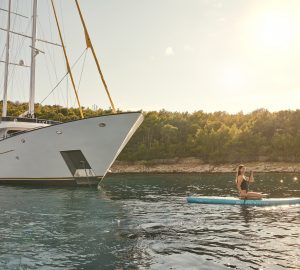
49m sailing yacht ANIMA MARIS is offering discounted rates for the remaining summer weeks in Croatia

IMAGES
COMMENTS
Between these two attachment points lies the critical part of the towing rig. At the yacht end is a V-shaped bridle, attached at the yacht's stern bitts and fitted with a ring at the center. The bridle should be nylon — to absorb a bit of the shock load when the tender hits a wave — but not so long that its stretch becomes a hazard in itself.
Category: News By MacGregor Yachts Team September 20, 2017. Sold! 160'11" Christensen "Match Point". Ten must-haves for safe and efficient tender towing from the top sportfishing yacht broker in South Florida, MacGregor Yachts. Call us today: 561-799-6511.
The tender should be as far aft as the boat's shape allows. Sailboats with long stern overhangs won't allow you to hitch up as far aft, but if the tender's motor is aft of the boat's rudder, maneuverability will be adequate. Double-enders tow well on the hip as the tender is able to push nearer to the boat's centerline.
For yacht skippers, apart from tenders, towing is a rare event and usually involves assisting a fellow yacht; not as hazardous as a tug towing a ship, of course, but it can still be difficult, especially in the open sea. Towing a yacht is done to get them home following a problem caused by engine failure or some other non-urgent inconvenience.
Use at least a three-eighths-inch line. Create a Y by tying a bowline in the end of the tow line, and then tie two other lengths of line to the loop. Attach the tag ends of the Y to each D-ring so that the pulling load is evenly distributed. Create a Y at the other end of the tow line and attach it to the stern of your boat.
Rope Inc. recommends Broward Machine of Ft. Lauderdale as a trusted tow-eye supplier. Visit their website: www.toweye.com or call (954) 920-8004 for a quote. Yacht tender towing rig. We use only the finest components from the finest manufacturers. There is nothing better than our Mighty Tow.
Pick a speed in displacement mode for towing. Take a look behind the yacht in calm and moderate sea conditions. Count back at least two full quarter wakes behind the yacht. (On a 100-foot vessel, this might be more than 250 feet back.) The bow of your tow should ride on the back of that wake.
Our Falcon Tender series ranges from 9 feet 6 inches to 15 feet 10 inches and can carry four to nine people, or 500 to 2,645 pounds. This series is the smaller range of tenders that we offer, but make no mistake — they have the power to get the job done and look good doing it.
http://www.motoryachtsunlimited.com.au/video-tips-towing-a-tender/This video is about The science of towing a Brig tender behind a larger boat without having...
Use Sturdy Cleats And Bitts. It's essential that you use the right bitts and cleats when towing a tender, as the equipment will undergo a lot of pressure. If you're using low-quality equipment, it could snap or break, which means you'll have to retrieve your tender. Breaking equipment can also create a safety issue and could cause ...
Answer: Many yacht owners tow a tender so they'll have a smaller boat to jet around in or to go ashore, but towing tenders can be dangerous and risky because so much can go wrong. The tender you're towing could get swamped - or worse, break loose and get lost at sea. It could smash into the stern of your yacht, causing extensive damage.
Tender and toy towing systems for Superyachts, careful conception and design, modern and elegant configurations and finishes. Emergency Towing Lines and more, all in practical storage bags. ... Send us the specifications of your yacht, tender or toys and request your personalized quote today. We ship to wherever you need it. REQUEST A QUOTE.
A tender is a boat that services a larger vessel (referred to as the mothership ). A tender can take many forms, delivering a wide range of conveniences. Historically called a 'ship's boat', tenders have supported large vessels for centuries. Guest transfers, refuge boats, landing crafts, stowed on deck or towed astern - little has changed!
Tender Towing Tow Bits and Hawser's We install custom fabricated tow bits and hawsers for all sizes of yacht tenders. Our tow bits are designed and fabricated to handle the stresses of ocean towing. We use only 316 SS material, through bolted with SS bolts and aluminum backing plates. All our tow hawser's are made […]
Yacht Tenders Overview. ... Tenders are also used as water toys to allow guests to have fun on the water. A high towing tower as well as a specialized watersports equipment can sometimes be equipped to a yacht tender. In fact sometimes large superyachts will carry a dedicated wake boat onboard that can be used as a tender or as a watersports ...
Every vessel has an (cheap and floating) emergency towing line but the tender towing line can replace it. Towing a tender is an easy way of transporting the tender without having to get it out of the water with the crane. This is also an opportunity to take along big tenders which don't fit inside the yacht. We deliver custom made tender towing ...
But I do realize that towing a large tender is not the favorite addition for captains and crew, and I fully understand why. Unfortunately, my boat is not yet big enough to keep a pair of 30-foot tenders in a climate-controlled garage below decks like, say, Steven Spielberg on M/Y Seven Seas. (Note the yet in that sentence.)
Length: 270cm. Maximum Load Capacity: 1500kg. Included: Tow bridle & storage bag. £88.45. excl. VAT and shipping costs. Available. Submit Quote for Lead Time and Shipping Costs 1. Request Quote Now. Small tender or dinghy towing bridle for tenders up to 1500kg OR custom made tender towing gear for any size tender.
Yacht Tender & Toys Guide 2023. Along with the yacht rental, the private crew, your gourmet chef, and the ability to personalize the itinerary however you like, the other thing people look forward to the most on their yacht charter is - the toys. Your yacht charter will come with a large number of yacht toys and a luxury yacht tender to play ...
This image is featured as part of the article Ferretti Yachts and Riva to attend Moscow Boat Show 2013. Riva Iseo superyacht tender Please contact CharterWorld - the luxury yacht charter specialist - for more on superyacht news item "Riva Iseo superyacht tender".
The 5th edition of the International exhibition of yachts and boats - Moscow Boat Show, held from March 20 to 25, 2012 will be hosted by the first pavilion of Crocus Expo International Exhibition Centre.This popular show is dedicated not only to the specialists of the market segment and professional sportsmen but also to those who consider sailing sport to be their hobby and well cherished ...
Two important events saw the Mangusta Maxi Open by the prominent Italian builder Overmarine again protagonist on the nautical scene: Marine Max exclusive partner for the United States attended the Palm Beach Boat Show, running from March 22 to 25 with the spectacular motor yacht Mangusta 92 and the Mangusta 130 superyacht on display.Burevestnik Group, on the other hand, was the star of the ...
Moscow Boat Show provides the perfect platform from which to preview new products, evaluate market trends, and establish long-lasting and commercially profitable partnerships. Despite the dynamic changes taking place in Russia and the rapid growth of the yachting sector, the show continues to complement and reflect the industry's demand and ...